









Apparel Sourcing Paris Autumn
Dates: September 15th to 17th 2025.
Venue: Paris

64th Dornbirn-Global Fiber Congress
Dates: September 10th to 12th 2025.
Venue: Dornbirn Austria.

ITMA ASIA + CITME, Singapore 2025
Dates: October 28th to 31st, 2025.
Venue: Expo Centre Singapore.

ShanghaiTex 2025
Dates: November 16th to 19th 2025.
Venue: SNIEC, Shanghai, China.

Textile Asia 2025, Lahore
Dates: November 22nd to 24th 2025. Venue: Lahore Expo Centre.
Textile Asia 2026, Karachi
Dates: December 05th to 07th 2026. Venue: Expo Centre, Karachi.

Heimtextil 2026, Frankfurt
Dates: January 13th to 16th, 2026
Venue: Frankfurt am Main.

FESPA Middle East 2026
Dates: January 13th to 15th 2026.
Venue: Dubai Exhibition Centre.

Dates: January 19th to 22nd 2026.
Venue: Hannover, Germany.

2025
Dates: February 26th to 28th, 2026. Venue: Ho Chi Minh City, Vietnam.

IGATEX Pakistan 2026, Lahore
Dates: April 08th to 11th 2026.
Venue: Expo Centre, Lahore

iCADEX Pakistan 2026, Lahore
Dates: April 08th to 11th 2026.
Venue: Expo Centre, Lahorei.

DOMOTEX asiaCHINAFLOOR 2026
Dates: May 27th to 29th 2026. Venue: NECC, Shanghai, China.

Techtextil and Texprocess 2026
Dates: April 21st to 24th, 2026
Venue: Frankfurt, Germany.

Index 2026
Dates: May 19th to 22nd, 2026. Venue: Palexpo, Geneva, Switzerland.

ITM 2026
Dates: June 9th to 13th, 2026. Venue: Istanbul, Turkey.

HIGHTEX 2026
Dates: June 9th to 13th, 2026. Venue: Istanbul, Turkey.

ITMA ASIA + CITME 2026
Dates: October 20th to 24th, 2026. Venue: NECC, Shanghai, China.

Dates: September 16th to 22nd, 2027. Venue: Hanover, Germany.
PAKISTAN


Founded in 1951 by Mazhar Yusuf (1924-2009)
Publisher
Nadeem Mazhar
Editor in Chief
Amina Baqai
Associate Editor
Nimrah Nadeem
Production Manager
Mazhar Ali
Layout & Design
Noor M. Jaan
Website / Social Media
Minhaj Ali
Hony-Editorial Board
Dr. Hafizur Rehman Sheikh Ph.D (UK) F.T.I. (UK)
Syed Mahfooz Qutab C.TEX, F.T.I (U.K), B.Sc. Fellow I.C.T.T Atlanta, GA; (USA)
Dr. Zubair Bandukda PhD (Textiles), CText ATI
Engr. Naeem Ilyas Khanani
Editorial & Advertising Office
B-4, 2nd Floor, 64/21, M.A.C.H, Miran M. Shah Road, Karachi - Pakistan
Tel: +92-21-34311674-5
Fax: +92-21-34533616
Email: info@ptj.com.pk
URL: http://www.ptj.com.pk
PTJ Europe Ltd.
Registered Office: Dairy House, Money Row Green, Holyport, Maidenhead, Berkshire, SL6 2ND, United Kingdom.
Registered no. 09141989 Tel: +44 792 2228 721
Available on Gale and Factiva affiliated international databases through Asianet Pakistan
Printed at: Color Plus Korangi, Karachi.
Published by Nadeem Mazhar from D-16, K.D.A. Scheme No.1. Karachi.




















Guess Jeans and Jeanologia bring the future of denim to Tokyo .
.18
Fundamentally Green Metrics launches in Latin America: A data-powered pilot to revolutionise sustainable fashion
AG acquires Schoeller Technologies AG
Oerlikon: Crimper repair workshop begins operations
SANITIZED and RUDOLF announce exclusive distribution partnership for Sanitized® textile
YKK: Zippers dyed with ECO-DYE® technology for the


Archroma and Veermata Jijabai Technological Institute (V.J.T.I.) forge strategic partnership
Expanding horizons through partnership: TEXTILCOLOR AG and Chemdyes Sdn. Bhd. join forces in Asia
Christian Botschek joins the management board of KARL MAYER
Crealet: 10 years with Andreas Wirz – an
AND EXHIBITIONS
Heimtextil Trends 26/27: Where AI and craftsmanship

Itema lays the first stone of the new manufacturing site of Ponte Nossa . . . . . .36
Rieter’s Mill Management Summit 2025: Advancing excellence in textile operations .38
Uster Technologies marks 150 years of empowering quality excellence .
Biancalani takes another step towards the digital factory: PLM system implementation
ecoTERRA by EFI Reggiani: a one-step revolution in pigment printing

.40

.43
Circulose launches CIRCULOSE® Forward to accelerate adoption in fashion supply chains
U.S. Cotton makes powerful impression at Intertextile Shanghai Apparel Fabrics . .45
Mayer & Cie expands its braiding portfolio again
Global textile themes converge in Porto
Pakistan & China: from strategic allies to economic partners
by Nadeem Mazhar, Managing Editor, Pakistan Textile Journal



Roadshows in Karachi and Lahore build momentum for ITMA ASIA + CITME 2025 . .52
ITMA ASIA + CITME, Singapore 2025 garners strong support from industry partners .56
VDMA member companies on display at ITMA ASIA + CITME
From Medical Sutures to Aerospace: BTMA Showcases Advanced Fibre Innovations
TMAS: Advanced automation from Swedish machinery in Singapore . . . . . . .60
Swissmem: Swiss innovation poised to take centre stage at ITMA ASIA + CITME 2025 .62
ACIMIT to showcase Italian innovation and sustainability at ITMA ASIA + CITME 2025 .63

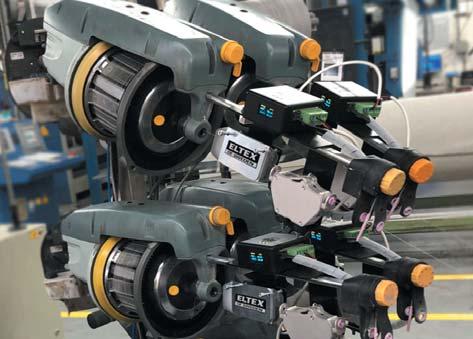


The friendly ties between Pakistan and China have long been described as an “allweather friendship”. It is a longstanding relationship built on mutual trust, respect, and cooperation. Since the establishment of diplomatic relations in 1951, the two nations have maintained a steady course, navigating shifts in regional and global dynamics while expanding their strategic and economic partnership. From political support on key international issues to multi-dimensional cooperation in infrastructure, energy, and industrial development, Pakistan and China continue to demonstrate a model of strong bilateral relations.
China remains Pakistan’s largest trading partner and a key source of investment, particularly in the energy and infrastructure sectors. Bilateral trade between the two countries reached US$ 16 billion in 2023–24, showcasing the steady expansion of commercial ties. However, the trade balance continues to tilt in China’s favour.
On the export side, Pakistan has increased its shipments to China from US$ 2 billion in 2022–23 to US$ 2.7 billion in 2023–24, with cotton yarn, fabrics, rice, leather, frozen fish, and surgical instruments among the leading products. China also ranks among the top importers of Pakistani cotton, a vital link for the country’s textile sector. Conversely, China remains Pakistan’s leading import partner, providing more than 29% of total imports, including textile machinery, electrical equipment, high-tech components, iron and steel, organic chemicals, and man-made filaments. More than half of Pakistan’s machinery and electronics imports are sourced from China, underlining China’s critical role in Pakistan’s industrial development.
The China-Pakistan Economic Corridor (CPEC) has further elevated the bilateral partnership, bringing in US$ 25.4 billion in foreign direct investment and creating 75,000 jobs. With nine special economic zones planned, CPEC offers vast potential for industrialization and value addition, areas particularly relevant to Pakistan’s textile and apparel industry.
Against this backdrop of deepening economic ties, the upcoming ITMA ASIA + CITME exhibition in Singapore holds great significance for Pakistan’s textile sector. Traditionally held in China, this leading textile machinery exhibition provides a unique platform for global innovation, knowledge-sharing, and business networking.
For Pakistan, whose textile industry is both the backbone of the economy and the largest export earner, the exhibition presents a timely opportunity. With Chinese suppliers dominating Pakistan’s imports of textile machinery, the event will offer Pakistani entrepreneurs and manufacturers a chance to explore the latest technologies, strengthen partnerships with Chinese and global suppliers, and identify solutions to enhance competitiveness in global markets.
Participation in ITMA ASIA + CITME will also enable Pakistan’s textile sector to align with global trends in automation, sustainability, and digitalization, all critical to meeting the demands of international buyers. As Pakistan seeks to diversify its export portfolio and expand its global market share, leveraging such platforms will be essential to drive innovation and efficiency.



1
Pakistan’s textile export sector faced a challenging period in August 2025, with a notable decline in key categories. According to the latest figures from the Pakistan Textile Council (PTC), the total export value for the July–August 2025 period reached $5.1 billion, reflecting a modest increase of just 0.65% compared to the same period last year. However, the situation took a sharp downturn in August, as exports fell by 12.5% yearon-year and 10% month-onmonth, highlighting persistent volatility in the country’s trade performance.
2
Prime Minister Shehbaz Sharif recently inaugurated a special economic zone (SEZ) in Islamabad, a move expected

to significantly enhance Pakistan's export potential. The SEZ, being developed by Chinese textile giant Challenge Fashion Private Limited, is projected to generate exports worth $400 million for the country, the Associated Press of Pakistan (APP) reported.
3
Acting U.S. Ambassador to Pakistan, Natalie A. Baker, recently held a constructive discussion with the All Pakistan Textile Mills Association (APTMA) to explore avenues for enhancing bilateral trade and economic relations between the United States and Pakistan. The meeting, attended by key APTMA figures including Chairman Kamran Arshad and several senior members,
1
The European Parliament has passed a landmark law aimed at reshaping the fast fashion industry. Central to the new regulation is the concept of Extended Producer Responsibility (EPR), which will hold textile producers accountable for the end-oflife disposal of their products, including both garments and accessories sold online within the EU or exported globally.
2
In a major escalation of trade tensions, U.S. President Donald Trump has implemented a significant hike in tariffs on Indian exports, now set at a 50% levy, effective from August 27, 2025. This marks a sharp increase from the previous 25% tariff, which
aimed to strengthen the textile sector and foster mutual growth in the wake of evolving trade dynamics.
4
Pakistan is preparing to roll out a pivotal fiveyear plan to revitalize its textile and industrial sectors, with the government focusing on creating a more competitive landscape for exports and addressing critical issues like energy costs and outdated infrastructure. Commerce Minister Jam Kamal Khan confirmed that a new Textiles and Apparel Policy, alongside a broader National Industrial Policy, is set to be finalized soon, both designed to boost Pakistan’s export potential and remove trade barriers that have hindered growth.
5
Pakistan’s textile sector is bracing for a dramatic rise in cotton imports, with the country’s import bill expected to hit up to $3 billion this year— double last year’s total—following severe flooding that has ravaged key cottongrowing regions, particularly in Punjab, and is now threatening Sindh, industry officials and analysts warned.
6
The Chinese Consulate General and the All Pakistan Textile Mills Association (APTMA) have committed to boosting bilateral trade between Pakistan and China. The two parties also discussed ways to fully capitalize on the benefits of the Free Trade Agreement (FTA) and increase textile industry collaboration.

had already put considerable strain on trade relations. The new measures impact a broad array of products, including textiles, apparel, gems, footwear, furniture, and chemicals.
3
New Zealand's apparel import sector has displayed a steady recovery in the first seven months of 2025, with figures showing a 4.7% increase, reaching approximately USD 711 million compared to the same period in 2024. This growth signals a modest rebound after earlier downturns, with demand slowly picking up across key apparel categories.
4
Sri Lanka’s export sector has shown impressive resilience in the first half of 2025, with
total export earnings reaching US$ 8.34 billion, marking a solid 6.70% growth compared to the same period in 2024. This growth underscores the effectiveness of the country's export strategies and its growing competitiveness on the global stage.
5
Tajikistan has set an ambitious goal to increase its textile export value from US$ 300 million to US$ 3 billion by 2040, with a strategic focus on expanding domestic cotton processing and creating a comprehensive, fullcycle textile production ecosystem. This vision was outlined by Sherali Kabir, Minister of Industry and New Technologies, during the First International Textile Forum.

6
Şirikçioğlu Grubu Textile, a leading Turkish denim manufacturer, has signed a significant agreement with Egypt’s Suez Canal Economic Zone to establish a new denim production facility in Egypt. The deal, valued at $20 million, is expected to create around 500 direct jobs and contribute significantly to the region’s export growth.
7
Vietnam’s textile and garment sector is surging toward its 2025 export target of US$47–48 billion, propelled by strong order volumes and a broadening global presence. As the year enters its final months, the industry remains confident in its ability to meet this ambitious goal.

Pakistan’s textile export sector faced a challenging period in August 2025, with a notable decline in key categories.
According to the latest figures from the Pakistan Textile Council (PTC), the total export value for the July–August 2025 period reached $5.1 billion, reflecting a modest increase of just 0.65% compared to the same period last year. However, the situation took a sharp downturn in August, as exports fell by 12.5% yearon-year and 10% month-on-month, highlighting persistent volatility in the country’s trade performance.
The textile and apparel sector, which comprises around 63% of Pakistan’s overall export value, generated $3.21 billion during the July–August period, marking a 10% year-on-year increase. Despite this growth, August saw textile exports plunge to $1.53 billion, a 7% drop compared to August 2024 and a 9% decrease from July 2025.
The long-term decline in traditional textile segments (HS codes 50–60) has continued to affect the sector, with exports expected to drop from $685 million in FY22 to $523 million in FY26. Among these categories, cotton exports fell by 3.5%, while knitted fabrics recorded a steep 32.7% decrease. The value-added segment (HS codes 61–63), typically more resilient, also faced a 13% decline in August, with key products like knitwear, non-knit apparel, and madeups showing signs of weakness.
Meanwhile, export markets have also shown shifting trends. The European Union remains Pakistan’s largest export destination, with $1.3 billion in textile sales, but exports to the United States have stagnated, holding steady at $878 million for the fifth consecutive year. This stagnation is attributed to the diminishing competitiveness of Pakistani products in global markets.
In light of these concerning trends, the PTC has called for urgent structural reforms to revitalize the textile export sector. Key recommendations include boosting support for traditional industries like cotton and spinning, enhancing cotton quality, and reducing production costs. The Council also stresses the need

for enhanced financing options, particularly through a stronger EXIM Bank and improved access to the Export Finance Scheme (EFS) and Long-Term Financing Facilities (LTFF). Additionally, the PTC is advocating for the introduction of a legally backed, five-year textile export strategy, with clear performance indicators to track progress.
“The decline in textile exports, especially in August, is a critical concern,” the PTC report stated. “Immediate reforms are essential to reverse the trend and ensure Pakistan’s continued competitiveness in the global textile market. The government must take swift action to safeguard jobs, market share, and foreign exchange inflows.”
through initiatives like the China-Pakistan Economic Corridor (CPEC). With Phase II of CPEC now underway, the focus is shifting towards industrialization, the creation of more special economic zones, clean energy projects, and initiatives aimed at improving agriculture and livelihoods.
Speaking at the inauguration, PM Shehbaz emphasized that the establishment of the SEZ would be a crucial step towards fostering technology transfer, skill development, and sustainable industrial growth. "This initiative will not only drive industrial growth but also contribute to the development of our workforce," he stated.

Prime Minister Shehbaz Sharif recently inaugurated a special economic zone (SEZ) in Islamabad, a move expected to significantly enhance Pakistan's export potential. The SEZ, being developed by Chinese textile giant Challenge Fashion Private Limited, is projected to generate exports worth $400 million for the country, the Associated Press of Pakistan (APP) reported.
Pakistan's longstanding partnership with China has been a cornerstone of its economic development, particularly
The Chinese textile group behind the SEZ, Challenge Fashion Private Limited, plans to invest $100 million over the next five years, signaling a strong commitment to Pakistan’s textile sector. The company aims to create a state-of-the-art textile industry in the country, enhancing its competitiveness in global markets.
During a meeting with the delegation led by Challenge Fashion’s chairman, Huwang Weiguo, Prime Minister Shehbaz reiterated Pakistan's eagerness to strengthen bilateral ties with China. “We are committed to taking our partnership to new heights,” he said, further assuring the delegation of full government support for the SEZ as part of CPEC’s industrialization component.
A number of federal ministers were also in attendance, including Ahsan Iqbal, Jam Kamal, Attaullah Tarar, Ali Pervez Malik, Sardar Awais Ahmad Leghari, and Special Assistant to the Prime Minister Tariq Fatemi.
The Prime Minister praised the Chinese investors for their trust in Pakistan's market, reiterating that more such initiatives would be welcomed in the country. "We are looking to establish more such units and learn from China’s expertise in textiles," PM Shehbaz noted. He also announced plans for a forthcoming China-Pakistan Business-to-Business Conference, which will be held in China, offering an excellent platform for private sector collaboration between the two nations.
Chairman Huwang expressed gratitude for the Prime Minister’s support and highlighted the company’s vision of building a modern and competitive textile industry in Pakistan. "We are looking forward to contributing to Pakistan’s industrial landscape," he stated.
In July, during a high-level meeting, Planning Minister Ahsan Iqbal reassured a Chinese delegation that the development of special economic zones would remain a top priority for the federal government. Earlier this year, the Sindh government also signed an agreement with Chinese and local investors to establish the Dhabeji SEZ under the second phase of CPEC.

Natalie A. Baker, Chargé D'affaires - U.S. Embassy & Consulates
Acting U.S. Ambassador to Pakistan, Natalie A. Baker, recently held a constructive discussion with the All Pakistan Textile Mills Association (APTMA) to explore avenues for enhancing bilateral trade and economic relations between the United States and Pakistan. The meeting, attended by key APTMA figures including Chairman Kamran Arshad and several senior members, aimed to strengthen the textile sector and foster mutual growth in the wake of evolving trade dynamics.
Joining Ambassador Baker were U.S. Consul General at Lahore Stetson Sanders, William Campbell, Political and Economic Chief, and Amna Anis, Economic Specialist. The group discussed the vast potential for collaboration between both nations, with a particular focus on expanding trade in cotton and textiles, addressing the trade deficit, and diversifying the range of commodities exchanged, especially in light of recent U.S. tariff policies.
The discussions underscored the opportunities for Pakistan’s textile sector to increase exports and gain a larger share in global markets, especially in the context of U.S.Pakistan relations.
In his address, APTMA Chairman Kamran Arshad presented an in-depth overview of Pakistan’s textile industry, highlighting the challenges posed by declining domestic cotton production. Arshad pointed out that the country would face significant cotton shortages this year, necessitating substantial imports to meet industry demand.

"The United States remains Pakistan’s largest cotton supplier, and we are the biggest importer of U.S. cotton in the world," he stated, emphasizing the importance of continued cooperation to secure cotton supplies for Pakistan's textile sector.

With textiles accounting for approximately 63% of Pakistan’s total exports, Arshad stressed the critical role that cotton availability plays in the country's economic stability. He also raised concerns about the withdrawal of the Regionally Competitive Energy Tariff (RCET) for electricity and gas, which he noted had led to the closure of over 100 spinning mills due to skyrocketing energy costs and rising tax burdens. Additionally, he pointed out the increased importation of yarn from other countries as a result of these challenges.
Arshad also advocated for a closer alignment between the textile sectors of the U.S. and Pakistan, proposing a new mechanism to import U.S. cotton under the GSM-102 program in exchange for textile exports to the U.S. He suggested that Pakistan’s textile export proceeds be used as collateral through an escrow account to manage this arrangement efficiently.

Asad Shafi, Chairman of APTMA North, further elaborated on the growing importance of U.S.-Pakistan trade relations, noting that the U.S. remains Pakistan's largest trading partner. "In 2024, bilateral trade between our two countries surpassed $7 billion, with textile and apparel making up 77% of Pakistan’s exports to the U.S.," he said. He also highlighted the need for a stronger focus on U.S.-Pakistan cotton linkages and the promotion of textile toll manufacturing in Pakistan by U.S. textile companies.
Shafi called for the introduction of high-yielding cotton seed technology and greater collaboration with U.S. cotton research institutes to improve quality. He
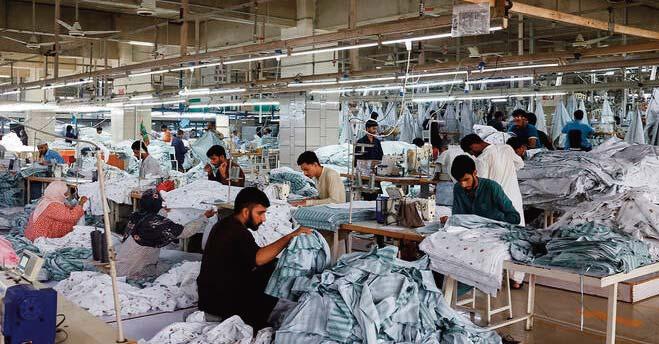
further emphasized the need for technological advancement in Pakistan’s agricultural sector, particularly through capacity building and technology transfer for cotton traceability. "Pakistan’s cotton sector could greatly benefit from the facilitation of international seed companies and the introduction of genetically modified seeds," he added.
The meeting concluded with a call for greater joint ventures and partnerships between U.S. and Pakistani investors, with a focus on strengthening the cotton supply chain and increasing the competitiveness of Pakistan’s textile industry on the global stage.
Pakistan is preparing to roll out a pivotal five-year plan to revitalize its textile and industrial sectors, with the government focusing on creating a more competitive landscape for exports and addressing critical issues like energy costs and outdated infrastructure.
Commerce

Minister Jam Kamal Khan confirmed that a new Textiles and Apparel Policy, alongside a broader National Industrial Policy, is set to be finalized soon, both designed to boost Pakistan’s export potential and remove trade barriers that have hindered growth.
The textile industry, a cornerstone of Pakistan’s economy, accounts for more
han half of the country’s total exports. It contributes approximately 8.5% to GDP and employs nearly 40% of the industrial labor force. However, the sector has faced mounting challenges, from rising energy prices to inefficiencies in policy execution, leaving Pakistan lagging behind regional competitors such as Bangladesh.
"We are fully committed to driving export growth," Minister Khan said after a meeting with representatives from the textile sector, including the All Pakistan Textile Mills Association (APTMA). “This new policy represents a shift towards a collaborative effort between the government and industry stakeholders to revive the textile sector.”
The Commerce Minister emphasized that this policy would mark a significant change from the past. "For the first time, both the government and the textile industry are aligned in their goals to ramp up export growth, and we aim to establish long-term, consistent policies," he stated. The government also plans to analyze the strategies of regional competitors, with Khan noting his recent observations in Dhaka, where Bangladesh’s ready-made garment sector has reached impressive export figures, contributing to its $50 billion annual export revenue.
Pakistan’s textile sector has long struggled to match the scale and success of Bangladesh’s garment industry, which now accounts for roughly 80% of the country's exports. However, with the right policies in place, Pakistan aims to narrow this gap.
To complement the textile policy, Prime Minister’s Special Assistant on Industries and Production, Haroon Akhtar
Khan, shared details about the broader National Industrial Policy. He outlined that the new policy would not be limited to the textile sector but would also address key industrial concerns, including energy costs, tax structure, and financing options. The policy will also include incentives for Greenfield projects and introduce landlease models through public-private partnerships, aiming to foster industrial growth across a wide range of sectors.


“The industrial policy will provide a comprehensive framework to boost industrial development, which will align with Prime Minister Shehbaz Sharif’s vision for a more robust and competitive economy,” Khan added.
Despite these promising developments, industry leaders are calling for swift action to address the sector's ongoing challenges. Representatives from APTMA have urged the government to eliminate
the structural inefficiencies that continue to hamper the textile industry’s global competitiveness.
In a related matter, the Pakistan Textile Council (PTC) voiced concerns over recent amendments to the Export Facilitation Scheme. These amendments removed key raw materials such as cotton, cotton yarn, and grey cloth from the scheme without providing clear tariff codes, creating confusion and delays in the implementation process.

warned that this uncertainty could have serious consequences for the country’s textile supply chains. "The lack of clarity is already leading to delays, inconsistent application, and disruptions in the supply chain, which could severely impact Pakistan’s textile exports," Anwar cautioned.


In a pivotal step to address the growing concern of textile waste, the European Parliament has passed a landmark law aimed at reshaping the fast fashion industry. Central to the new regulation is the concept of Extended Producer Responsibility (EPR), which will hold textile producers accountable for the end-of-life disposal of their products, including both garments and accessories sold online within the EU or exported globally.
The law requires manufacturers, including online fashion retailers, to cover the cost of collection, sorting, and recycling of textiles, with the goal of minimizing waste and encouraging sustainable practices across the sector. The deadline for compliance is set at 30 months for most companies, while microenterprises will be granted an additional year to meet the requirements.
A key feature of this legislation is the tiered fee system that ties EPR fees to the environmental impact of fashion products. Specifically, brands that contribute to the disposable nature of fast fashion—characterized by ultra-low-cost, high-turnover clothing—will face higher fees to reflect the environmental burden of their business models.
The scope of the law extends beyond clothing, covering a wide range of textile products such as footwear, bedding,

curtains, and even mattresses. The overarching goal is to promote circular economy principles by ensuring that producers take responsibility for their products throughout their lifecycle, including their disposal or recycling.
The impact of this law is expected to extend far beyond the EU’s borders. As global supply chains are increasingly interconnected, countries that export textiles to the EU, such as Bangladesh, Vietnam, China, and India, will likely be required to meet new compliance standards. This will drive a shift in manufacturing processes, with a stronger emphasis on sustainable design, traceability, and waste reduction.
For the fast fashion industry, the law represents both a challenge and a potential opportunity. While the financial burden of compliance may be high, it also paves the way for brands to innovate in sustainable fashion, offering them a chance to capture the growing demand for eco-friendly products.
By holding brands accountable for textile waste and promoting a shift toward more sustainable production

practices, the EU’s new regulation sets a clear precedent for the rest of the world in tackling the growing issue of textile waste and fast fashion.

In a major escalation of trade tensions, U.S. President Donald Trump has implemented a significant hike in tariffs on Indian exports, now set at a 50% levy, effective from August 27, 2025. This marks a sharp increase from the previous 25% tariff, which had already put considerable strain on trade relations. The new measures impact a broad array of products, including textiles, apparel, gems, footwear, furniture, and chemicals.
The tariff increase is being framed as a punitive response to India’s ongoing purchases of Russian oil, a move that has drawn sharp criticism from both governments and industry players.
The Indian Ministry of External Affairs swiftly condemned the decision, describing it as “unfair,” “unjustified,” and “unreasonable.” The impact on India’s economy is expected to be severe, with analysts projecting a substantial reduction in trade volumes—potentially leading to billions of dollars in losses. Sectors heavily reliant on U.S. exports, such as textiles, gems, seafood, and chemicals, are poised to bear the brunt of the tariffs.
The textile and apparel sector is expected to suffer particularly high losses, with projections suggesting a 40–50%
decline in export volumes to the U.S., amounting to losses ranging from $2.5 to $3 billion. Key textile hubs like Surat and Ahmedabad in Gujarat fear that the new tariffs may render U.S. trade “impossible” for local exporters, with some warning of long-term damage to the industry’s competitiveness.
In light of the tariff hike, the Confederation of Indian Textile Industry (CITI) has called for urgent intervention from the government. Industry bodies are pushing for support schemes, incentives, and policy reforms aimed at shielding exporters from the brunt of these tariffs. They are also calling for stronger measures to maintain India’s competitive position in global markets.
The Indian government is reportedly working on a multi-pronged approach to mitigate the damage. This includes offering financial assistance to exporters, diversifying markets to regions like Africa, Latin America, and the EU, and pursuing diplomatic avenues to negotiate for exemptions or reductions in the tariff rates. Despite the blow to exports, some economists remain optimistic that India’s broader economy will continue to thrive, bolstered by domestic consumption and emerging opportunities in premium markets.
The new tariff measures are not only an economic challenge for India, but they also risk straining the diplomatic relationship between the U.S. and India. Observers suggest that the move could have far-reaching implications, potentially affecting broader areas of cooperation, including defense deals and multilateral partnerships like the Quad.

New Zealand's apparel import sector has displayed a steady recovery in the first seven months of 2025, with figures showing a 4.7% increase, reaching approximately USD 711 million compared to the same period in 2024. This growth signals a modest rebound after earlier downturns, with demand slowly picking up across key apparel categories.

During the first five months of the year, the value of apparel imports stood at USD 504.9 million, representing a slight year-on-year decline of 0.98%. Despite the dip, China maintained its dominant position as the top supplier, accounting for just over 60% of New Zealand's total apparel imports. However, shifts in sourcing patterns were apparent, as Bangladesh saw a minor decline in shipments, while Vietnam registered impressive double-digit growth. Additionally, countries like India and Indonesia also experienced gains, reflecting an increasingly diversified sourcing base.
By the mid-year point, the import figures showed signs of improvement, with imports rising by 5.1% to around USD 622 million in the first half of 2025. This increase was largely driven by a stronger demand for knitted clothing, with imports seeing a nearly 9% rise in June compared to the same month in 2024.
The cumulative total for January to July 2025 reached USD 711 million, illustrating a steady rebound in the sector. While China continues to dominate the market, the growing contributions from countries in Southeast Asia and South Asia have begun to reshape New Zealand's apparel import landscape. This shift indicates that New Zealand's supply chains are becoming more diverse, lessening reliance on a single source country and offering a more balanced outlook for the long-term stability of the market.
Although the growth rate remains modest, it underscores the resilience of consumer demand and the ongoing adjustments within global supply chains. With the growth of competitors like Vietnam, India, and Indonesia, New Zealand's apparel imports appear to be gaining momentum, signaling a more stable and sustainable future for the market.

Sri Lanka’s export sector has shown impressive resilience in the first half of 2025, with total export earnings reaching US$ 8.34 billion, marking a solid 6.70% growth compared to the same period in 2024. This growth underscores the effectiveness of the country's export strategies and its growing competitiveness on the global stage.
The apparel and textile sector, a cornerstone of Sri Lanka’s export economy, recorded steady growth with a 3.71% year-on-year increase in June 2025, bringing in US$ 463.12 million compared to June 2024. For the first six months of 2025, earnings from this sector reached US$ 2.60 billion, marking an 8.19% increase compared to the same period last year.
Exports to key markets showed positive momentum. Exports to the
United States rose by 4.35%, reaching US$ 919.92 million, while exports to the United Kingdom grew by 6.77%, amounting to US$ 371.54 million. These results highlight Sri Lanka's growing market share in its key apparel and textile destinations.
In addition to apparel and textiles, services exports have emerged as a major contributor to Sri Lanka’s export growth. In June 2025 alone, Sri Lanka earned US$ 309.61 million from services exports, reflecting a 9.78% increase over the first half of 2024. The total services export revenue for January to June 2025 stood at US$ 1.83 billion.
Sri Lanka's service sector continues to diversify, with key areas such as ICT/BPM, Construction, Financial Services, and Transport & Logistics playing pivotal roles in driving export performance. The rise of Sri Lanka’s knowledge-based economy has enhanced the country’s ability to offer high-value services, creating new employment opportunities across the island and expanding the nation’s export portfolio.
Overall, total merchandise and services exports in June 2025 reached US$ 1.46 billion, reflecting a strong 8.73% growth over June 2024. This continued upward trajectory points to the effectiveness of Sri Lanka’s long-term strategies aimed at broadening market access and enhancing its export competitiveness.
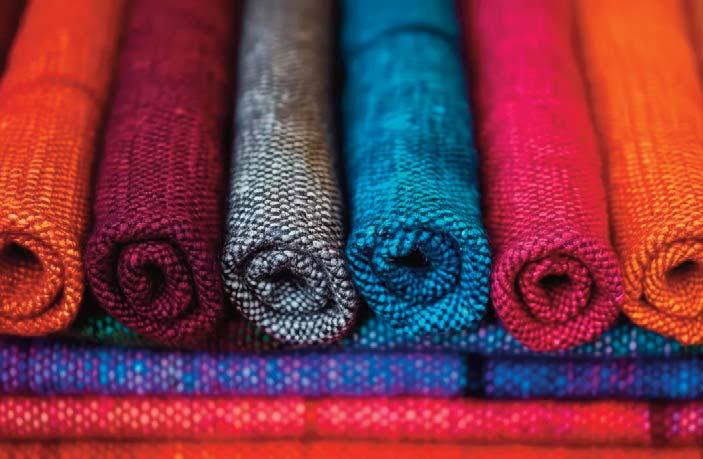

Tajikistan has set an ambitious goal to increase its textile export value from US$ 300 million to US$ 3 billion by 2040, with a strategic focus on expanding domestic cotton processing and creating a comprehensive, full-cycle textile production ecosystem. This vision was outlined by Sherali Kabir, Minister of

Industry and New Technologies, during the First International Textile Forum.
Currently, only 30% of Tajikistan’s cotton is processed locally, with the remainder exported as raw material. Kabir emphasized that the country’s target to reach US$ 3 billion in textile exports is feasible with strategic investments, infrastructure development, and a focus on adding value through the production of finished goods.
This initiative is in line with Tajikistan's Fourth National Strategy, which aims to significantly accelerate industrialization, including a goal to double industrial output within five years. A core component of this strategy is the Textile Industry Development Strategy, launched two years ago, which focuses on developing integrated clusters that cover every step of cotton production, from cultivation to finished textile products.
The government plans to fully process all cotton produced domestically, creating over 600,000 jobs in the process. Kabir noted that the government is keen to foster strong public-private collaborations and welcomed increasing interest from foreign investors, technology providers, and financial institutions.
At the forum, Kabir highlighted that Tajikistan’s long-term vision for its textile sector aligns with both the National Development Strategy 2030 and the Social Protection Strategy 2040, positioning the country to become a future hub for industrial innovation. With a solid focus on sustainable practices,
Tajikistan aims to develop a modernized, tech-driven textile sector that can compete on a global scale.
In pursuit of this goal, the government has committed to the development of several full-cycle cottonprocessing complexes. The initiative includes the construction of closed-loop production chains, combining cotton farming with manufacturing to produce finished goods like yarn, fabrics, and garments.

Şirikçioğlu Grubu Textile, a leading Turkish denim manufacturer, has signed a significant agreement with Egypt’s Suez Canal Economic Zone to establish a new denim production facility in Egypt. The deal, valued at $20 million, is expected to create around 500 direct jobs and contribute significantly to the region’s export growth.
The new factory, covering 16,700 m², will focus on producing high-quality denim yarns, threads, and fabrics—critical materials for manufacturing various types of jeans textiles. With an annual production capacity of 18 million tonnes of denim fabric, 50% of the output will be allocated for export markets, while the remaining half will supply local factories

in Egypt, reinforcing the country’s domestic textile sector.
The agreement was officially signed by Walid Gamal El-Din, Chairman of the Suez Canal Economic Zone, and Atef Şirikçi, Chairman of Şirikçioğlu Grubu. The move is part of Egypt’s ongoing strategy to boost local manufacturing and increase its export capacity in the textile industry.
El-Din emphasized the importance of attracting foreign investments to the region, stating that the Suez Canal Economic Zone is intensifying its efforts to localize key industries. He highlighted the strategic objective to deepen local manufacturing capabilities and expand exports, noting the commitment to enhancing regional infrastructure to meet rising global demand.
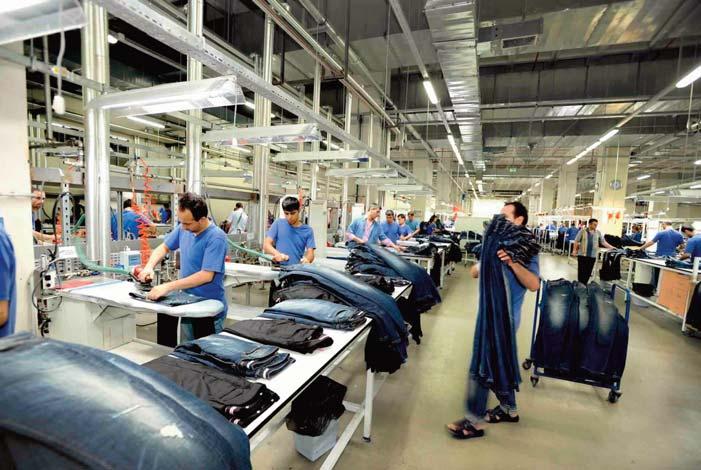
This new factory represents the 25th project in the Qantara West Industrial Zone, bringing the total investments in the area to $681.5 million and generating approximately 34,955 direct jobs. El-Din further underscored that the expansion of the denim production facility aligns with the government’s broader vision to strengthen Egypt's textile industry, particularly in the spinning and weaving sectors, from raw material production to finished goods.
Şirikçioğlu Grubu, established in 1997, is a well-established name in the textile industry in Turkey. The company already produces denim fabrics and yarns and has a workforce of over 5,000 employees. Its products are exported to global brands, further cementing its position as a leading player in the international denim market.
This partnership is not the only major development in the region. El-Din also recently signed a contract with Turkish company Ulusoy for an $18 million industrial project on a 35,000 m² land plot in the same industrial zone. This factory will specialize in producing various types of yarns, including fibre yarns, carpet yarns, and household crochet yarns, and is expected to generate around 855 direct job opportunities.
These strategic investments demonstrate the growing importance of the Suez Canal Economic Zone as a hub for industrial growth and export-oriented production, positioning Egypt as a key player in the regional textile industry.
Guess Airwash™, developed by Jeanologia, makes history by replacing traditional stonewashing with air
Tokyo’s iconic fashion district, will host “The Next 40 Years of Denim”, an immersive exhibition presented by Guess to celebrate the past and future of denim. This unique experience blends heritage, innovation, and sustainability to mark the beginning of a new chapter, the era of air.
Already showcased in Florence and Amsterdam, the exhibition now arrives in Tokyo, bringing its global message to one of the world’s most trendsetting cities.
At the center of this transformation is Guess Airwash™, disruptive technology developed by Jeanologia that replaces traditional stonewashing. Using air, light, and nanobubbles, it eliminates pumice stones, drastically reduces water consumption, by up to 80%, and avoids harmful chemicals and excessive energy use, while maintaining the iconic authentic denim look.
“We are proud to partner with GUESS in bringing this revolution to Japan,” says Carmen Silla, Marketing Director at Jeanologia. “Guess Airwash™ represents the perfect fusion of fashion, technology, and environmental responsibility. Its arrival in Japan is a milestone in our shared mission to transform the denim industry.”
The exhibition features a live Airwash Lab, offering behind-the-scenes insight into sustainable denim production with Jeanologia’s cutting-edge technologies, laser, e-flow, and G2 ozone. Visitors can

also enjoy a customization area, where they receive a denim tote bag to personalize with high-precision laser engraving. Local artists such as Ryota Daimon and A Love Movement add personal touches.
Additionally, the newly opened GUESS flagship store in Shibuya now features Jeanologia’s Nano laser technology, offering in-store customizations with a fast, precise, and eco-friendly process.
“The Next 40 Years of Denim” is more than an exhibition, it’s a statement. It proves that denim can be authentic, creative, and sustainable all at once. And Tokyo, with its forward-thinking spirit, is the perfect place to take the next step.
Jeanologia: 30 years of leading the transformation of the textile industry
Since its founding, Jeanologia has been on a mission to transform the textile

industry into a more ethical, sustainable, and efficient model. The company works closely with brands, retailers, and suppliers on this transformative journey, offering disruptive technologies, innovative software, and a new operational model. Their groundbreaking solutions, including laser technology, G2 ozone, Dancing Box, e-flow, H2Zero, and ColorBox, have redefined garment design and finishing standards, eliminating polluting processes and significantly reducing the use of water, energy, and chemicals. Thanks to these advancements, Jeanologia has saved millions of liters of water and eliminated harmful substances, turning its vision of a truly sustainable textile industry into reality.
In 2025, Jeanologia celebrates its 30th anniversary, marking a legacy of three decades of sustainable innovation. From the introduction of its laser technology in 1999, which revolutionized denim finishing, to its current challenge of implementing a revolutionary sustainable garment dyeing process, the Spanish company has pioneered solutions that not only benefit the environment but also optimize operational costs. Looking ahead, Jeanologia remains committed to creating an eco-efficient and ethical textile future, encouraging all industry stakeholders to join its Mission Zero initiative: dehydrate and detoxify the textile industry. No more water and toxic chemicals used in garment finishing around the world.

Fundamentally, a Mexico City-based community platform for slow fashion, and Green Story, a global leader in environmental data, have announced the launch of "Fundamentally Green Metrics – LATAM," a groundbreaking environmental data-powered pilot program designed to accelerate sustainability transformation within the Latin American fashion industry.
This initiative aims to provide small and medium-sized fashion producers in the region with access to essential sustainability metrics and tools, including digital product passports and carbon footprint analysis, powered by Green Story’s AI-enabled platform.
By participating in this pilot, selected brands can enhance their traceability and readiness to navigate rising international sustainability regulations, while exploring pathways to global competitiveness.
The fashion and textile industry is under increasing global scrutiny regarding sustainability, with emerging regulations and market expectations making traceability and impact measurement essential for brands seeking international relevance. While Latin America is home to extraordinary creativity and craftsmanship, many producers in the region face systemic barriers to accessing robust sustainability data and tools. Fundamentally Green Metrics – LATAM seeks to help close this gap by offering targeted, affordable access to advanced environmental metrics and expert guidance tailored to the region’s needs.
“Sustainability is not a nice-to-have. It’s the foundation for resilience, relevance, and growth in the fashion industry,” says Diana Hernandez, CEO and Founder of Fundamentally. "Through Fundamentally Green Metrics – LATAM, we aim to make sustainability more accessible, transparent, and inclusive for


align their values with measurable impact and gain global visibility for their creativity."
Green Story, known for its internationally recognized sustainability platform and a client base in more than 34 countries, brings deep expertise in Life Cycle Assessments (LCAs), Digital Product Passports (DPPs), and comprehensive environmental data.
Fundamentally anchors the partnership in the Latin American context by mobilizing a regional ecosystem of designers, producers, and changemakers, helping to foster conditions where sustainability becomes visible, actionable, and rooted in local realities.
"We are thrilled to partner with Fundamentally to empower Latin American fashion brands and manufacturers with the tools they need to better navigate a sustainable global market," says Akhil Sivanandan, CEO of Green Story.
“This pilot program provides meaningful access to Green Story’s sustainability tools at preferential rates

tailored to the Latin American context, thanks to a regional subsidy managed by Fundamentally. By doing so, we aim to help reduce the financial and technical barriers that have historically limited small producers in the region. This initiative strongly aligns with our mission to enable better data for better decisions, across all stakeholders worldwide.”
As part of this partnership, Fundamentally has been appointed as Green Story’s exclusive Cluster Partner for Latin America, coordinating strategic implementation across the region.
Selected participants in the pilot program for “Fundamentally Green Metrics – LATAM” will receive a suite of benefits designed to support their sustainability performance and international export readiness.
The benefits include:
One-year access to Green Story’s sustainability intelligence platform Unlimited Digital Product Passports (DPPs) Opportunity to use Green Story data
in support of Higg Index submissions (pending separate qualification)
Optional carbon offsetting via verified projects evaluated by Green Story
Training resources and sustainability communication tools
API connectivity for integrating impact metrics into e-commerce platforms
Promotional visibility through “Fundamentally Green Metrics –LATAM” campaigns
This program aims to offer significant economic and reputational benefits, including improved preparedness for emerging compliance requirements, increased alignment with EU sustainability expectations, greater visibility among responsible buyers, enhanced readiness to enter premium export markets, and the potential to build consumer trust through the communication of verified environmental impact.
The pilot cohort will be limited to 30 selected brands and manufacturers that produce fashion in Latin America and operate with small or medium-sized production capacities. Selected participants should demonstrate a strong interest in improving their sustainability practices and traceability systems, and a

commitment to preparing for international markets.
Participants will be selected jointly by Fundamentally and Green Story, based on alignment with the program’s objectives and eligibility criteria. The pilot will run for a three-month implementation period, and participating brands will retain access to Green Story’s platform and tools for one year following their onboarding date.
Based on the outcomes of the pilot, Green Story and Fundamentally aim to expand the reach of the program to support many more brands and manufacturers committed to sustainability throughout Latin America.
Brands and manufacturers interested in joining this pilot program may submit an expression of interest by emailing: greenmetrics@wefundamentally.com
TEXTILCOLOR AG, a leading provider of innovative textile chemicals, has announced the acquisition of Sevelen-based Schoeller Technologies AG from Schoeller Textil AG. With this strategically important step, TEXTILCOLOR strengthens its position in the international market, expands its technology portfolio and creates new development capacities for future-oriented textile and chemical solutions.
Schoeller Technologies AG will be integrated into the new “Brand Management” business unit of TEXTILCOLOR AG. Schoeller Technologies AG was previously responsible for the global licensing and marketing of textile technologies developed by Schoeller Textil AG. With its international experience, strong network and deep application expertise in the field of functional and protective textiles, the company has established itself as a reliable partner to numerous brands. With the integration into TEXTILCOLOR AG, the marketing of these technologies will be continued – under a new brand identity of TEXTILCOLOR AG.
“The acquisition is a consistent milestone in our long-term growth strategy,” explains Detlef Fischer, CEO of TEXTILCOLOR AG. “With Schoeller Technologies, we are not only gaining renowned technologies, but also a highly qualified

team with unique expertise. We will continue to develop and refine the products manufactured to date in this partnership in order to continue to provide our customers with future-oriented and sustainable technologies.”
Hans Kohn, former Chief Operating Officer of Schoeller Technologies AG and new Head of Brand Management, adds: “Both companies share a common vision: the development of high-performance, sustainable and innovative textile solutions for a responsible future. Existing partnerships and customer relationships of Schoeller Technologies AG will be continued in the usual high quality, the established partner network and strengthened by the expanded possibilities of TEXTILCOLOR.”

Since the beginning of the year, Oerlikon Textile Inc. has been offering a crimper repair service, making it the company's first location worldwide to do so. The workshop in Charlotte, USA specializes primarily in Fleissner and Neumag crimpers.
Crimping is one of the most important and demanding steps in the staple fiber process. A uniform and stable crimp is crucial for optimum product quality. This makes it even more important to keep the essential components in good condition and repair them promptly to prevent production downtime.
In addition to the right equipment, this precise work also requires appropriate specialist personnel. Oerlikon Textile Inc. has built up a competent team at its Charlotte site, which offers a complete overhaul including pressure roller and chamber repairs, as well as checking the pneumatic, hydraulic, and electrical systems. Each crimper is delivered pre-set and undergoes a thorough test run. These services are, of course, also covered by a warranty. “With this new
service, we can work closely with our customers and guarantee the best service with OEM standards and short response times,” says Daniel Möller-Langmaack, Team Leader Service Sales Staple Fiber at Oerlikon Neumag. “This repair center is another important step in helping our customers to be successful and profitable in their business,” adds Tilmann Seidel, Vice President and Head of Customer Services at Oerlikon Neumag.
Since 2025, the Swiss Oerlikon Group has been operating its manmade fibers business as a subsidiary under the traditional name Barmag. This includes the established product brands Oerlikon Barmag, Oerlikon Neumag and Oerlikon Nonwoven. As a future-oriented company, the research and development of Barmag is driven by energy-efficiency and sustainable technologies (e-save).
Barmag is one of the leading providers of manmade fibers filament spinning systems, texturing machines, BCF systems, staple fibers systems and solutions for the production of nonwovens. Together with its range of polycondensation and extrusion systems and their key components, Barmag caters
to the entire manufacturing process, from the monomer all the way through to the textured yarn, and supports it with customer-oriented engineering services. The product portfolio is rounded off with automation and digital solutions. In addition, Barmag offers high-precision gear metering pumps for the textile industry and other sectors, including the automotive, chemical and paint industries.
The main markets for the Barmag product portfolio are in Asia, particularly China, India, Türkiye. The USA is another significant market. Worldwide, Barmag –with round about 2,500 employees – has a presence in 120 countries with production, sales and distribution and service organizations. At the Research and Development centers in Remscheid, Neumünster (Germany), and Suzhou (China), highly qualified engineers, technologists and technicians develop innovative and technologically leading products for tomorrow’s world.
Oerlikon (SIX: OERL) is a global leader in surface technologies. Headquartered in Pfäffikon, Switzerland, the Group has a global presence with over 12 000 employees across 199 locations in 38 countries, achieving sales of CHF 2.4 billion in 2024.

SANITIZED AG, a global leader in hygiene function and material protection technologies, and Rudolf Holding SE & Co. KG, a leading global specialty chemical company, are pleased to jointly announce a new exclusive distribution partnership. Effective February 1, 2026, RUDOLF will become the exclusive distributor of Sanitized® textile additives worldwide. A transition period will begin on September 1 2025, during which both the current and new distributors will ensure continuity of supply and support to customers.
This strategic collaboration brings together two family-owned companies that share common values: a deep commitment to customer proximity, a sustainable business mindset, and the ambition to drive game-changing innovation in the global textile industry. With SANITIZED’s trusted expertise in hygiene management and odor control and RUDOLF’s world-leading capabilities in textile finishing, the partnership unites two highly competent and respected industry players in service of the global textile industry.
The shift comes at a time of increasing market complexity. Evolving customer requirements, trade barriers, and structural overcapacity are placing new demands on the industry. In response, SANITIZED and RUDOLF are joining forces to deliver even greater value through close collaboration, global availability of products and technical support, and ongoing innovation aligned with the latest technological and sustainability standards.
With more than 2,000 employees, 18 production sites, and 50 sales offices across Europe, Africa, the Americas, and Asia, RUDOLF offers market access and customer support at a global scale. Its “One-Phase to the Customer” mindset ensures that service, technical consulting, and customer needs are handled with a seamless, integrated approach.
“We are very much looking forward to working with our new distribution partner,” said Michael Lüthi, CEO of SANITIZED. “RUDOLF shares the same long-term values as SANITIZED – a deep commitment to partnership, trust, and delivering added value to the textile industry. Together, we are ready to take
the next step in serving our customers worldwide and striving to be the industry’s preferred partner.”
Marcos Furrer, CEO of RUDOLF, added: “With over a century of experience in textile chemistry, we deeply value the importance of trusted partnerships and staying close to the customer. This new exciting collaboration with SANITIZED is a strong strategic fit that allows us to combine technical excellence with a shared ambition to use our common understanding of customer’s needs. We are thrilled to embark on this journey together.”
Customers will benefit from global availability, strong local support, and broad range of trusted high-quality products. The Sanitized® Seal of Confidence further builds consumer trust and helps customers differentiate their offerings, showcasing proven effectiveness and lasting product reliability. Sanitized® technologies will be available through RUDOLF from September 1, 2025, onward. As of February 1, 2026, RUDOLF will assume full exclusive distribution rights.
Collaborating with the University of Fukui’s Fukumira Design Factory
YKK Corporation (Headquarters: Chiyoda-ku, Tokyo; President: Koichi Matsushima; hereafter, YKK) provided zippers to the University of Fukui’s Fukumira Design Factory for its booth at the “Science: Connecting You to the Future” exhibit (sponsored by the Ministry of Education, Culture, Sports, Science and Technology), which took place at the Expo 2025 Osaka, Kansai, Japan between August 14 -19.
At the Fukumira Design Factory booth, visitors experienced a simulated future envisioned by supercritical fluid technology, where the patterns on their clothing were decolorized and re-dyed into new designs using this advanced technique. As a product related to this technique, YKK provided zippers dyed with ECO-DYE® technology. ECO-DYE® dyeing technology utilizes carbon dioxide in a supercritical fluid state to reduce the amount of water consumed in the dyeing arrangements assembly to almost zero, making it possible to significantly reduce water consumption due to dyeing.
Under the YKK Philosophy of the CYCLE OF GOODNESS® – No one prospers without rendering benefit to others – YKK contributes to the

realization of a sustainable society through the development of sustainable products and technologies.
“Science: Connecting You to the Future” Overview
The Fukumira Design Factory exhibited at the EXPO Exhibition Center WASSE North located on Yumeshima for

Expo 2025 Osaka, Kansai, Japan. This event, sponsored by the Ministry of Education, Culture, Sports, Science and Technology, ran from Thursday, August 14, to Tuesday, August 19, 2025, with daily hours from 10 AM to 7:30 PM, except for the final day when it concluded at 6 PM. Fukumira Design Factory's booth was situated in the “Connect with the Earth” Zone.


Archroma, a global leader in sustainable specialty chemicals, has entered into a strategic collaboration with Veermata Jijabai Technological Institute (V.J.T.I.), Mumbai, to advance research and innovation in green chemistry and sustainable technologies. This strategic partnership brings together industry expertise and academic excellence to tackle some of today’s most pressing environmental challenges.
The collaboration focuses on pioneering research and development in green chemistry, emphasizing the design of safer chemicals and cleaner industrial processes. Key areas of innovation include renewable energy solutions such as biofuels and hydrogen technologies, and the development of sustainable materials like bioplastics, advanced composites, and nanomaterials.
Water treatment is also a major area of focus, with initiatives targeting advanced wastewater recycling and the recovery of valuable resources. In parallel, education and training programs are being developed to raise awareness about sustainable practices and to equip the next generation of engineers and scientists with the tools needed to drive lasting change.
As part of this partnership, VJTI is launching a new course, “Sustainability: Industry Perspectives for a Greener World,” developed in close collaboration with Archroma. The syllabus seamlessly integrates academic principles with realworld industry applications, offering students a comprehensive framework on sustainability. Topics include waste management, greenhouse gas emission measurement and ESG compliance. By incorporating theoretical concepts alongside industry case studies, the course is designed to equip students with

the technical and decision-making skills needed to lead sustainable transformation across sectors.
“We are proud to partner with V.J.T.I. in this bold initiative to push the boundaries of green chemistry and sustainable technologies. At Archroma, sustainability is not just a commitment— it’s at the core of how we innovate and operate,” said Anjani Prasad, VP South Asia, Archroma. “This partnership enables us to combine our global industrial expertise with academic excellence to create scalable, science-driven solutions for the environmental challenges facing our industry and planet.”
The partnership also includes a strong industry collaboration component, aimed at accelerating the adoption of sustainable manufacturing practices. This includes the development of life cycle assessment tools, carbon footprint analysis methodologies, and policy advocacy to support the creation of environmentally responsible regulations. Scientific insights generated through the partnership will guide decision-making and promote public awareness.
Community outreach forms a vital part of this initiative, with workshops,
seminars, and local collaborations designed to implement and promote ecofriendly technologies at the grassroots level.
To further strengthen the industryacademia bridge, the collaboration will focus on securing CSR funding, inviting industry leaders for guest lectures, launching student training programs, and modernizing laboratory infrastructure. These steps are expected to drive industry-funded research projects and foster real-world applications of academic research in sustainable industrial practices.
“This collaboration with Archroma strengthens our commitment to innovation in sustainable technologies and opens new avenues for research, real-world application, and student development. We are proud to join forces with a global leader and look forward to setting new benchmarks in industryacademia cooperation,” said Mr. Sachin Kore, Director of V.J.T.I.
Through these multifaceted efforts, Archroma and V.J.T.I. aim to become a model for impactful, sustainable collaboration that delivers tangible environmental and societal benefits.

TEXTILCOLOR AG is pleased to announce the beginning of a strategic and forward-looking partnership between TEXTILCOLOR AG, Switzerland, and Chemdyes Sdn. Bhd., Malaysia.
As part of this collaboration, Chemdyes Sdn. Bhd. will take on the role of official distributor, production site, and agent for TEXTILCOLOR AG in the key markets of Malaysia, Vietnam, Thailand, and Pakistan.
This alliance brings together the innovation-driven excellence of TEXTILCOLOR AG and the strong regional expertise of Chemdyes Sdn. Bhd.
The goal of this partnership is to enhance service quality, streamline product availability, and strengthen technical support for customers in these dynamic and fast-growing textile regions.
By combining Swiss precision with Southeast Asian agility, TEXTILCOLOR AG is confident this partnership will deliver exceptional value, responsiveness, and reliability to the industry.
TEXTILCOLOR AG looks forward to a long-lasting and mutually beneficial collaboration.
About
TEXTILCOLOR AG stands for the development, manufacture, and

distribution of textile auxiliaries, textile dyes, pigments, and optical brighteners. Based in Sevelen, Switzerland, TEXTILCOLOR AG supports its customers with in-depth know-how and technical consulting across all stages of textile production and finishing.
With decades of experience in application technology, product development, and product safety - and a presence in over 50 countriesTEXTILCOLOR AG is a trusted partner for sustainable and innovative solutions tailored to the needs of the global textile industry.
Chemdyes Sdn. Bhd. has established itself as one of the leading companies for textile auxiliaries in Malaysia. The company specializes in high-performance textile chemicals for weaving, pretreatment, dyeing, printing, finishing, optical brighteners, injection printing, and textile coating.
Thanks to its commitment to quality, innovation, and customer service, Chemdyes has built a strong reputation in the regional textile industry. Their local expertise and modern infrastructure make them an ideal partner for expanding the reach of TEXTILCOLOR AG’s premium product range and technical support across Southeast Asia and beyond.
The mechanical engineer has been part of the KARL MAYER team since 2005 and has since made significant contributions to the company’s success in various positions. His varied activities have focused on the areas of logistics and assembly.
Christian Botschek has continuously taken on more responsibility improving the worldwide profitability situation through optimisation and increased customer benefits. He managed the overall assembly and logistics centre at the headquarters in Obertshausen for three years and then, as Chief of Technology, played a key role in the development and expansion of the company’s Chinese site in Changzhou for several years.
In 2023, he became Deputy Managing Director of KARL MAYER China. At the same time, he was also Managing Director of KARL MAYER Technische Textilien GmbH.
In his new position as part of the Management Board of KARL MAYER STOLL
Textilmaschinenfabrik, Christian Botschek is also responsible for assembly, production, and prototype construction, among other things. His primary goal is to achieve a sustainable increase in profitability.
“I want to help make processes more efficient, reduce waste, and sustainably strengthen our performance in production. Our ambition is to work economically successfully – with consistently high customer satisfaction,” says Christian Botschek.


On October 1, 2015 Andreas Wirz joined Crealet AG as a technical specialist. Starting in this initial role, he quickly took on responsibility in the areas of technology, with projects in control engineering and documentation creation, as well as in sales, where he played a key role in quotations, calculations, and customer service.
From the outset, it was clear that he would gradually grow into a potential successor to the company.
With commitment, expertise, and entrepreneurial flair, he quickly progressed: in 2018, he took on the role of sales manager, and later joined the management team. Since 2022, he has held overall responsibility for Crealet AG as CEO and shareholder.
Under his leadership, Crealet has not only been given a new look, but has also successfully advanced the development of its control systems and warp-feeding devices.
In addition, he has strengthened the company’s international market position and placed greater emphasis on personal customer relationships.
Today, Andreas Wirz stands for a clear vision: innovations in electronics and embedded systems that help textile companies worldwide to reliably manufacture the most sophisticated fabrics.
Crealet AG would like to thank Andreas for 10 years of dedication, leadership, and passion, and looks forward to many more years full of ideas, progress, and shared success.
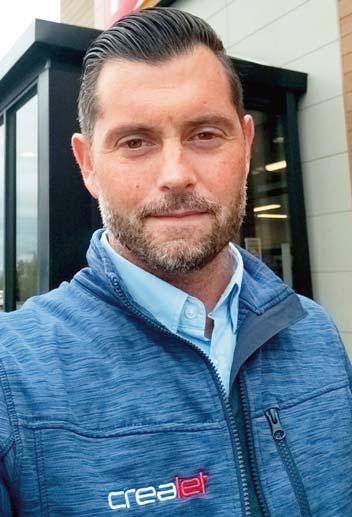




Artificial intelligence has long been part of design: precise, efficient, omnipresent. At the same time, there is a growing desire for the handmade, for intuition and irregularity. It is exactly within this field of tension that the Heimtextil Trends 26/27 unfold: under the central theme of ‘Craft is a verb’, they show how high-tech, and craftsmanship are not contradictory, but open up new creative perspectives together.
Together with the founders of Alcova, Heimtextil presents a trend landscape in which craftsmanship and digital design methods merge. Tangible textures meet generative patterns, natural structures meet algorithmic precision. This does not create a contrast, but rather an interplay: where traditional craft techniques reach their limits, artificial intelligence opens up new possibilities. This gives rise to a new type of player: the techno-craftsman. He does not see digital tools as competition, but as an extension of his toolkit. Heimtextil Trends 26/27 thus address the current challenges of the creative industry: AI streamlines processes but raises questions about control and creative identity. The trends therefore

focus on the lasting importance of craftsmanship – and how AI can meaningfully complement and support it.
‘The Heimtextil Trends 26/27 illustrate how artificial intelligence will change the textile industry and, in combination with craftsmanship, opens up new perspectives. They provide the industry with impulses for sustainable production methods, innovative cooperation models and the development of future-proof business strategies,’ says Olaf Schmidt, Vice President Textiles & Textile Technologies at Messe Frankfurt.
Alcova is not just about material and aesthetic trends. Rather, the curators focus on an attitude towards the mindful use of AI in design, as a complement to human creativity and as a means of relief and inspiration. This perspective also shapes their work: ‘At Alcova, we are drawn to objects and processes that are unexpected, experimental, even a little unruly – yet somehow find their way into our homes,’ explains Valentina Ciuffi from Alcova. ‘What surrounds us each day should provoke, raise questions, and invite conversation. That's why our focus
is on projects that anticipate trends rather than chase them,’ adds Joseph Grima from Alcova.
Six key trends at a glance
Six key trends illustrate how this fusion of craftsmanship and technology is manifesting itself in concrete terms. They open up different perspectives on how AI and manual design will interact in the future.
1. Re: media
Textiles that emerge from the interplay of digital design and handcraft: drawings are first transferred into digital renderings, then converted back into jacquards or hand-embroidered patterns. This results in works that reveal the tension between different media. Motifs inspired by glitches – broken aesthetics, pixelated colour gradients and digitally reworked hand drawings can be expected.
2. Visible co-work
AI provides the designs, humans complete them: in these works, the boundaries between craftsmanship and code become blurred. The design is created using artificial intelligence and is completed through skilled craftsmanship. Examples include digitally embroidered linen, 3D knitted patchwork pieces and generative patterns on classic fabrics.
3. Sensing nature
Nature is the original source of inspiration here. Its forms, rhythms and structures reveal a diversity that is waiting to be decoded. Digital tools take on the role of translators: the rough surface of the ocean is transformed into a textile


grid, while the lichen patterns growing over rocks are turned into decorative motifs through algorithmic processing.
4. A playful touch
At a time when design is characterised by functionality and optimisation, small decorative details are

coming back into focus – not for practical reasons, but for pleasure. A ruffle on an otherwise minimalist curtain, a neon element on a naturalcoloured linen blanket or an unexpectedly placed tassel: such gestures act as deliberate interruptions. They remind us that joy remains an essential part of design – and that textiles can also have humour.
5. Crafted irregularity
Fabrics with knots, irregular dyeing, visible seams and asymmetrical finishes take centre stage. These materials do not hide the craftsmanship but emphasise it – as a conscious counterpoint to the flawless perfection of AI-assisted design.
6. The uncanny valley
Technical elements such as wires, connections and coils are no longer hidden but deliberately displayed and showcased. They appear as visible details and draw the eye to the inner workings of the machine, rather than its flawless surface. This results in designs that reveal what is hidden – and, with their playful expression, unfold something strange, almost alien.
The colour palette of Heimtextil Trends 26/27
The colour palette ranges from downto-earth tones to digital irritation: shades such as sand, clay, soot, olive and tree bark convey stability, materiality and connection. However, this natural calm is deliberately disrupted by sharp, synthetic accents such as acidic green, digital lilac and bright screen blue. These ‘glitches’ create tension and turn the colour scheme into a vibrant statement.


Stand space application is now open for ITMA 2027. The 7-day exhibition will be held at Messegelaende Hannover, Germany from 16 to 22 September 2027. Featuring the theme ‘Co-creating the Future of Textiles’, the exhibition is expected to bring together global leaders and innovators to shape the industry’s future.
Following the success of ITMA 2023 in Milan, leading textile and garment machinery manufacturers are invited to secure their presence early at the industry’s most influential platform to launch their technologies, forge partnerships and grow their businesses worldwide.
Alex Zucchi, President of CEMATEX, owner of ITMA, said: “In 2027, ITMA returns to Hanover after 36 years. More than a platform for the promotion of innovative technologies, it is a turning point in the textile industry. As we evolve from Industry 4.0 to 5.0, we’re not just automating, we’re humanising technology. Together, we’ll accelerate the shift towards a circular economy – one that is built on collaboration, innovation and regeneration.”
Dr. Janpeter Horn, Chairperson of VDMA Textile Machinery Association, said: “We expect to have a strong
presence of VDMA companies as our members are excited that ITMA will be staged in Germany after a long break. Supported by Hanover’s best-in-class exhibition infrastructure, ITMA 2027 will be an excellent platform for them to launch their latest innovations, focusing on efficiency, automation, digitalisation and sustainability.”
The exhibition is expected to gross 200,000 square metres and draw over 1,500 exhibitors. Well known as the Olympics of textile machinery exhibitions, the upcoming edition prepares the industry to meet new challenges and opportunities amidst tighter sustainability regulations and rapidly evolving technological developments. To apply for space, visit www.itma.com.
ITMA 2027 will feature 20 product sectors, encompassing the entire textile and garment manufacturing value chain. One of the sectors is Research and Innovation. Research and educational institutions applying to exhibit in this sector will be able to leverage a CEMATEX grant to defray 50% of their participation costs.
CEMATEX will also be providing a grant to fully subsidise the participation
of up to 20 young companies with innovative products and services for the textile industry. Launched in 2023, 15 companies were selected to participate in the Start-Up Valley.
One of the exhibitors, TreeToTextilea Swedish-based cellulose fibre producer - was delighted with the outcome of their participation. Ida Alnemo, Head of Application & Sustainability, enthused: “ITMA has been a great platform for future collaboration needed to scale breakthrough innovations like ours, to make a positive change in the textile industry in offering better fibres to all.”
Information on the two grants can be found on the exhibition website
More information on ITMA 2027 is also available at the upcoming ITMA ASIA + CITME, Singapore 2025 exhibition which will be held at Singapore Expo from 28 to 31 October 2025. Visit stand H5-D304 to learn more about the exhibition, venue, accommodation options and Hanover city from the ITMA Services team and partners.
The last ITMA exhibition was held in Milan in 2023. It featured the participation of 1,709 exhibitors from 47 countries, and visitorship of over 111,000 from 143 countries.

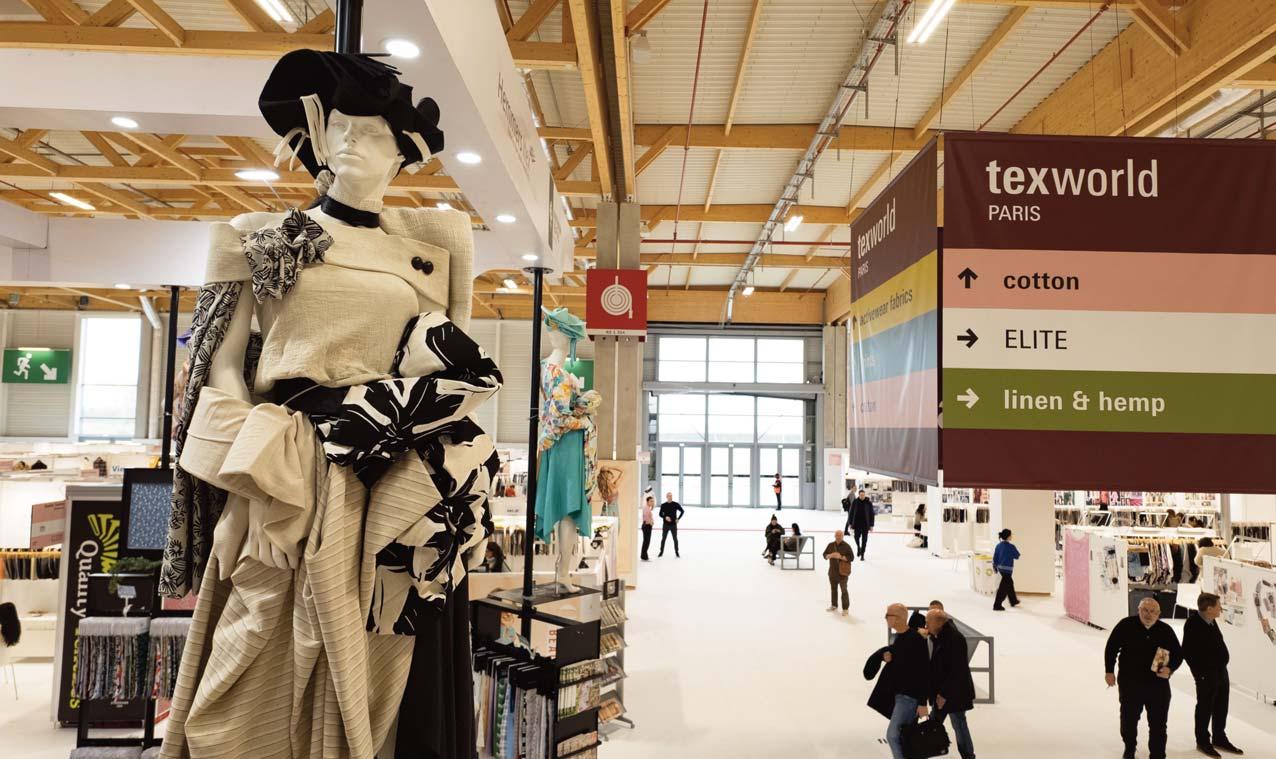
Texworld Apparel Sourcing Paris returns for its 57th edition at the Paris–Le Bourget Exhibition Centre from 15 to 17 September 2025, offering for the first time a perfect balance between textile manufacturers (Texworld) and clothing manufacturers (Apparel Sourcing). With nearly 1,300 exhibitors from over 35 countries, the Parisian trade shows will present an unmissable sourcing offer, the largest and most diverse in Europe.
For three days, buyers will be able to discover the offerings of the leading marketplace in Europe for textiles and clothing. This diverse and competitive selection of top-tier products focuses on the segments that constitute the core of finished garment consumption and on which brands are currently concentrating their efforts. The Avantex sector, dedicated to innovative solutions for more efficient and sustainable fashion, is expanding and asserting its position with a growing number of B2B services at the
cutting edge of technological innovation and eco-responsibility to effectively address the main challenges facing fashion companies and brands.
Innovation and diversity
This autumn edition opens with a unique selection of manufacturers and clothing producers: Texworld Paris and Apparel Sourcing Paris will offer a comprehensive overview of the major textile sourcing areas. The key players, China, Turkey, India, Korea, Taiwan, Bangladesh and Pakistan, will be grouped together under the banner of their national pavilions, such as Turkish manufacturers, supported by the Istanbul Chamber of Commerce (ITO), and Korean manufacturers led by KOFOTI, the National Federation of Textile Industries. These Texworld regulars will be joined by suppliers from alternative sourcing areas such as Cambodia, Myanmar, Rwanda, Vietnam and Egypt. Apparel Sourcing, which will welcome
683 exhibitors, is achieving its best results this year, on a par with Texworld. This unique gathering – With 1,300 exhibitors, Texworld Apparel Sourcing Paris is now the leading European trade fair in the sector – offering a response to the challenges faced by buyers. The prospects for near sourcing are confirmed, with the notable presence of manufacturers from Central and Eastern European countries such as Armenia and Kyrgyzstan, whose pavilions will be located at the entrance to Hall 3. The Near Sourcing Hub, established by the B2B digital platform Foursource, a partner of Messe Frankfurt France, will be located in the same area. Following the success of their previous digital participation, more than 10 European companies will be physically present for the first time.
The Initiatives zone will be one of the highlights of this edition: located at the entrance of Hall 4, it will emphasize the
expertise of particularly sharp players. The Indian company Pasari Textiles will take this opportunity to reveal the manufacturing techniques of its artisanal embroideries, while the Istanbul Chamber of Commerce will emphasize the expertise of the Turkish textile industry through contemporary creations playing with patterns and dyeing. LISAA Mode students will create live pieces in knit and crochet, illustrating the quality of both design and execution. Finally, the China Textile Innovation Center (CTIC) will offer a space dedicated to design and products from a carefully selected group of Chinese players.
Avantex Paris: focus on sustainable fashion
Laboratory of innovations around sustainable fashion, Avantex Paris will bring together about thirty participants in the passage connecting Hall 2 (trends forum, services, Agora) to Hall 3. This unique offering will shine some light on emerging technologies, solutions, or materials available to address key fashion challenges: circularity, transparency, traceability, sustainability, optimization, scalability, interactivity, and immersion in virtual universes. It will be organised at the show around three complementary universes: the HUB, an open zone presenting innovative solutions and services for the fashion industries; the Designer HUB, dedicated to textile studios, agencies, and independent designers in direct contact with brands and manufacturers; the ReSources space, which this year will bring together four

companies selected by the TCBL (Textile & Clothing Business Labs) association, a partner of Avantex for three editions. The choice of Phygital retained for this podium will allow visitors to access, via a QR Code linked to the Foursource platform, all the useful information about these companies and their offerings.
A traditional landmark of the fair, the 8th edition of the Avantex Fashion Pitch will reward the most innovative startups in sustainable development applied to fashion. The partners of this event are the IFA Paris fashion school and its Foundry incubator, the virtual world creation platform for fashion and luxury VLGE, Luxiders Magazine dedicated to ecoresponsible fashion and design, the

Circular Textile Days trade show, and Texpertise Network, the global network of textile trade shows by Messe Frankfurt.
Conference, debates: flagship events and highlights
True to its mission as a trailblazer, Texworld Apparel Sourcing Paris is committed to providing visitors with a clear vision of market developments. The conferences, round tables, and animations offered during these three days with inspiring international leaders from the fashion and textile industry (see online program) at the Agora in Hall 2 will fulfill this mission and will be punctuated by several highlights. On the fashion trends side, Louis Gérin, one of the two art directors of the shows, will comment on Nova Fabula, the trend book that will inspire the Autumn-Winter 2026-2027 collections (Monday, September 15 at 12:15 PM). On the innovation and prospective side, numerous conferences and round tables proposed on the Avantex agenda will fuel reflection on the key themes of the moment. Another feature of this edition, on Wednesday, September 17, the Agora will host the Bio Fashion Innovation Day, the European event proposed by TCBL around projects and experiences related to local production, bio-sourced materials, and eco-design solutions: keynotes, round tables, workshops, and networking sessions will punctuate the day.


The redevelopment of the historic industrial area of Seriana Valley is underway, with a new manufacturing hub for the Itema Group set to emerge
Ponte Nossa (BG) - The ceremony for the laying of the First Stone of the new Itema Site in Ponte Nossa took place on Thursday, 18th September.
The area, which once accommodated Cotonificio Cantoni, has lied unused since 2004. In July 2022, Itema concluded the acquisition of the site with the goals counteracting the abandonment of mountain areas and giving new life to an area that for many years in the past was the flagship of the industrial reality of the Seriana Valley, and of creating a new world-class production hub for the world of weaving machinery and solutions.
The Group of Colzate has then worked on an industrial requalification plan for the area, which is divided in multiple steps, and aimed to have new innovative spaces in terms of sustainability and circularity to accommodate efficiency enhancements in

the production and engineering activities of Itema Group companies.
The laying of the First Stone marked the beginning of the construction works of Step 1 which is expected to be completed during 2027. This first step is dedicated to building a new manufacturing plant to improve the efficiency of the production capacity of
the Itema weaving core business.
The CEO of Itema Group, Ugo Ghilardi said: “In 2022 we took the decision to begin a journey that would lead Itema Group to have a position adapted to the turbulent changes taking place and at the same time strengthen our brand, which is recognized throughout the textile world as an
ambassador of “Made in Italy”. One step of this journey involves both process and production, and product assets, which find a home in this new manufacturing site in Ponte Nossa. A completion of our industrial presence in Bergamo, in Seriana Valley, that will also allow our historical site in Colzate to further develop. Our ambition is to create value in this territory in order to compete in the global textile industry”.
In fact, the new plant will be built according to the most innovative principles of productive and logistical efficiency, while implementing the latest technologies in terms of manufacturing.
Maurizio Radici, Itema Group’s President of the Board of Directors added: “We are proud to continue our textile journey in Seriana Valley, the cradle of our history, with a project in which vision, innovation, and sustainability converge. Our roots are here. This new manufacturing hub represents our investment in a cuttingedge and prosperous future for our territory”.
The investment in the new manufacturing hub of Ponte Nossa, that will also involve a future development for Lamiflex SpA in the following steps, testifies to the Itema Group’s desire to continue to represent a solid industrial entity for Bergamo and whole Italy, as well as a partner that looks at the future for all the weaving mills of the world.
Itema Group
Itema is an Italian leading global provider of advanced weaving solutions, including weaving machines, spare parts, and integrated services. The company is the only manufacturer in the world to provide the top three weft insertion technologies: rapier, airjet and projectile, with an ample product portfolio and a steadfast commitment to continuous innovation and technological advancement of our weaving machines.




Itema owns Lamiflex, leading supplier of technical composite products and Schoch, leading producer of weaving accessories. The group also has stakes in Tofflon Itema, the Italian branch of Tofflon, an Asian biopharmaceutical
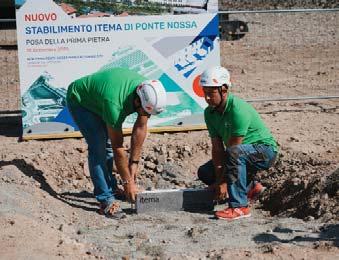
multinational company. Sixty percent of Itema is held by Gianni Radici’s heirs. The remaining part is held by Arizzi and Torri families. More information about Itema can be found on www.itemagroup.com.


The third edition of the Mill Management Summit 2025 successfully brought together key executives and decisionmakers from 12 leading textile companies across Pakistan and Egypt for an immersive learning experience.
Designed to provide a comprehensive perspective on the rapidly evolving textile industry, the program addressed a wide range of strategic themes, including Rieter’s latest technologies, after-sales services, automation, digitization, recycling, and mill economics.
Participants particularly valued the hands-on sessions at the Spin Center, as well as insightful visits to the Bräcker and Graf facilities. They also explored textile heritage through curated museum tours. Beyond the technical agenda, the summit fostered meaningful networking and social opportunities, encouraging open exchange of ideas and best practices among industry peers.
Rieter is the world’s leading supplier of systems for manufacturing yarn from staple fibers in spinning mills. Based in Winterthur (Switzerland), the company develops and manufactures machinery, systems and components used to convert natural and man-made fibers and their blends into yarns in the most cost-efficient manner.


Cutting-edge spinning technology from Rieter contributes to sustainability in the textile value chain by minimizing the use of resources. Rieter has been in business for 230 years, has 18 production locations in ten countries and employs a global workforce of around 4 560, about 15% of whom are based in Switzerland.

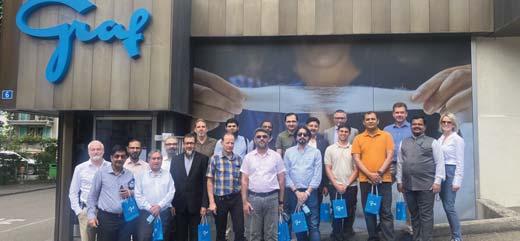


From precision instruments to end-to-end solutions
Uster Technologies marks 150 years of excellence – a milestone that reflects continuous adaptation to customer needs and industry change. Over the decades, Uster has evolved from manufacturing quality testing instruments into a trusted partner shaping the future of textile production. Moving forward, Uster can be compared to a ‘family doctor’ with strategic advice and endto-end solutions optimizing mill performance. With its ‘Think Quality – Next Level’ vision, Uster empowers customers beyond just data and devices towards intelligent decision-making. This transition sets the course for a more sustainable, efficient, and impactful textile industry.
Reaching 150 years is an achievement for any company, especially in the modern era of rapidly changing business conditions. For Uster Technologies, it has been a process of continuous development, shifting its core competence from origin manufacturing
telegraphy equipment to its 21st Century role as global leader in textile quality systems and solutions.
Today, that progression sees Uster taking on a new mission – customerfocused, with a business model offering end-to-end solutions for quality management and business profitability.
A customer once said that Uster Technologies could be compared to a family doctor. It’s a powerful metaphor, and it suggests that Uster should go further than being a provider of instruments such as yarn clearers and evenness testers. Excellent as these are for measuring and controlling quality, their role typically ends at that point –comparable with the medic’s simple thermometer.
Taking the family doctor analogy further, Uster wants to understand in detail the context of each spinning mill –its operations, goals, and market
environment – to advance from simply delivering data towards actively helping mills improve. In this way, Uster is evolving to make a much bigger impact, as a trusted partner, much like the family doctor, who monitors health but also provides insights, guidance, and longterm care.
This concept opens the door to a new level of value creation. Rather than offering isolated instruments, Uster can empower mills to achieve more, by providing integrated, end-to-end solutions. This requires understanding the mill’s entire production chain, identifying opportunities for improvement, and aligning quality management with the mill’s broader business goals.
‘Think Quality – Next Level’ is Uster’s shift from product supplier to strategic partner. It's about helping customers move from reactive quality control to proactive quality assurance and
optimization. This approach allows mills to unlock higher efficiency, better performance, and increased profitability.
The ultimate goal is satisfaction for the customer’s customer, in a way that is profitable for the spinning mill. Uster has the preconditions available, with what’s called the ‘solution stack’. That means Uster has the sensing points connecting hardware and managing parameters across the spinning mill and along the value chain. These cloud-connected instruments feed data to the Uster 360Q platform. This is where the problemsolving happens, the ultimate enabler for decision-making, action and optimization with a comprehensive mill overview. Applying AI here, the result is greater automation and performance, uniquely combined with the support of top Uster textile advisors to integrate all the key data for the outcome the spinner wants. Superior sensors, intelligent analysis and unrivaled human expertise create the Uster magic that is greatly valued but rarely matched.
Uster is at the start of this transformation, but the direction remains clear and unchanged – as long as it continues to meet the needs of their customers. The Uster FiberQ raw material management solution has already been proven in practice – and another new solution will be introduced at ITMA Asia + CITME 2025. The full impact of ‘Think Quality – Next Level’ might be found in a mill in the year 2035, when a mill can

correlate data from the bale laydown with fabric quality parameters. Collating all this information and even connecting the data with mills across the world, can be massively influential, giving spinners early optimization potential with a clear view of the ultimate quality impact.
A sustainable textile industry should be part of a better planet for all. Stakeholders today expect Uster to take on the kind of pioneering role it had when launching the first evenness tester in 1948. While textile recycling is still in its infancy, there is a clear call for Uster to lead the way in developing innovative quality management approaches that support and accelerate recycling efforts in collaboration with stakeholders. The adoption and scale-up in use of recycled
fibers will see this segment evolve from a 1% niche of production to something notably bigger. In that sense, sustainability is very important, so Uster is currently developing many technologies to fit with ongoing ecological trends.
As with all Uster policies, this goal is aligned with the company’s purpose statement: “We empower people to create a better future for the textile industry through quality and innovative end-to-end solutions.” A purpose is of universal importance, driving and directing the company and focusing on the basic principles – especially in tough times. It’s the way to build resilience for the company and for its people, and is the foundation for the optimism that Uster will continue to achieve significant milestones on into the next 150 years.
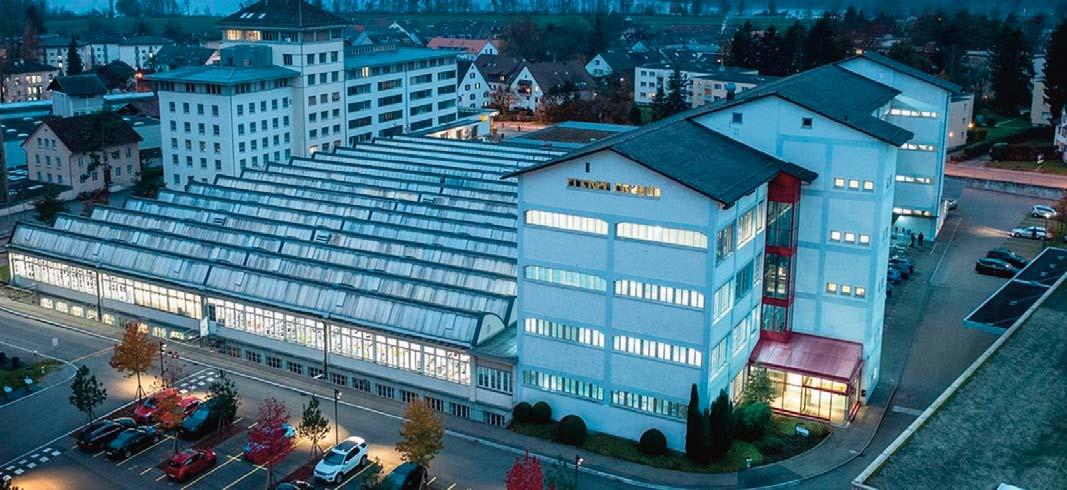
At Biancalani, they never stop moving forward. Their continuous pursuit of excellence has led them to take another important step in the digital transformation of their production processes.
Why this new step?
Over the years, Biancalani has built a solid technological infrastructure with their CAD systems Creo Parametric 10.0 and ERP BMS, which have supported Biancalani growth. But the textile market evolves rapidly, and the company always wants to stay one step ahead.
This is why they have decided to integrate a PLM (Product Lifecycle Management) system that would allow Biancalani to further optimize its processes, creating even more effective synergies between design, production, and administration.

Total control of revisions and reduction of non-conformities
The results speak for themselves
20% reduction in time-to-market in design and technical release phases 5% reduction in post-sales costs per product unit
Significant improvement in information quality and traceability




Biancalani’s choice: a state of the art PLM platform
Biancalani chose to implement a market-leading PLM platform, supported by MADE 4.0 and specialized partners, to create a fully integrated ecosystem for managing their products’ lifecycle.
What have Biancalaniachieved concretely?
The new PLM system has brought them tangible and measurable improvements:
Automatic coding of articles and documents
Structured management of engineering BOMs (eBOM) and manufacturing BOMs (mBOM)
Clear and traceable approval workflows
Complete integration between CAD and ERP
“With the adoption of the new PLM system, we have centralized the company’s technical knowledge, improving not only design efficiency but also our ability to respond promptly to market changes and requirements” sahred Eng. Maurizio Toccafondi, Research and Development Manager
The technological infrastructure behind innovation
The project required creating a nextgeneration technological environment: Two dedicated servers (application and worker) on Windows Server 2022 Integration with corporate Active Directory
Automatic coding system for components and orders
Structured change management processes
Multi-format publishing for CAD data
Biancalani also implemented specific document categories (technical specifications, manuals, testing, reports)







with their dedicated lifecycles to ensure maximum consistency and version control.
Perfect integration with the systems
One of the most interesting aspects is the direct integration with their Creo CAD: now the structure of assemblies and components is automatically transferred to the PLM, where they manage all technical data, attributes, and approval cycles according to ISO 9001 standards.
The result is a transformation that has taken Biancalani from already solid processes to a completely data-driven model, enabling even faster, more precise, and collaborative decisions. What does the future hold?
This project represents Biancalani concrete vision of Industry 4.0. They want to demonstrate that digital innovation is not reserved only for large multinationals: even a small enterprise like theirs can and must invest in advanced technologies to build tomorrow’s competitiveness.

Investing in digitalization today means laying the foundations for continuous innovation, sustainability, and industrial resilience that the market demands.



For more than 75 years, EFI Reggiani has been synonymous with innovation in textile printing. From traditional rotary systems to pioneering inkjet platforms, the Italian manufacturer has built a reputation for combining technological know-how with deep industry expertise. Today, EFI Reggiani offers a complete portfolio of textile solutions— spanning rotary, flatbed, and digital technologies—serving applications from fashion to home textiles. With over 35 years of digital experience and installations worldwide, the company has launched ecoTERRA, its latest step forward in digital pigment printing.
The brilliant thing about the EFI™ Reggiani ecoTERRA pigment solution is what customers don’t have to do: no pretreatment, no steaming, no washing, no stentering. It’s an all-in-one solution that delivers faster turnaround times for the on-demand delivery of multiple applications. Plus, costs are reduced significantly by eliminating large, pretreated fabric stock and ancillary equipment and using less energy and water throughout the entire process.
Conventional pigment printing requires multiple ancillary steps, pretreatment, steaming, washing, and drying, each consuming water, energy, and labor. ecoTERRA redefines this workflow: feed untreated fabric, print, fix, and rewind, all inside the printer. The result is simplified production planning, lower resource use, and faster delivery
cycles. For mills and brands navigating fast fashion and on-demand models, this reduction in process stages offers a decisive competitive edge.
Pigment printing has often been associated with trade-offs in hand feel and durability. ecoTERRA is engineered to overcome those limits. Its seven-color ink set provides a wide, vivid gamut, sharp detail, and a soft hand suitable for apparel and home textiles. Independent tests by Centro Tessile Serico Spa Consortile confirm strong wet and dry rubbing fastness, validating performance on untreated cotton and blends.
Applications span fashion, accessories, and home décor, with reliable results on cotton, viscose, linen, and mixed fibers. This versatility is crucial for producers managing diverse collections across multiple segments.
ecoTERRA’s most compelling attribute may be its sustainability profile. By removing water-intensive finishing steps, it sharply reduces environmental impact. Its recirculating belt-washing system cuts water use by up to 80%, while energy consumption and chemical inputs also decline. These reductions translate into both lower costs and measurable progress toward sustainability targets increasingly demanded by brands and regulators.
The inks themselves are OEKO-TEX Eco Passport verified, ZDHC MRSL Level 3 conformant, and GOTS additive approved, credentials that strengthen
compliance throughout the textile supply chain.
The ecoTERRA platform spans six models, from the compact Gold 8 at 190 m²/h to the industrial Titan 340 reaching 720 m²/h. This scalability allows producers to align investment with volume requirements while maintaining the same one-step efficiency. EFI Reggiani also emphasizes ink formulations that maximize printhead longevity, improving both uptime and total cost of ownership.
With decades of textile expertise and more than 75 pigment systems installed worldwide, EFI Reggiani pairs technological innovation with the service infrastructure needed to support industrial adoption. That heritage gives manufacturers confidence when considering a strategic pivot toward pigment-based digital workflows.
As the textile sector confronts the dual demands of speed and sustainability, ecoTERRA offers a timely solution. It proves that high-quality pigment printing no longer requires trade-offs in process complexity, resource use, or performance.
For mills and brands seeking to modernize operations, the value is clear: ecoTERRA enables scalable, on-demand production with a lighter environmental footprint, without sacrificing color, hand feel, or durability.
As part of its mission to evolve from a pulp producer to a full solution provider, Circulose is taking a bold step toward scaling circular solutions in the fashion industry with the launch of CIRCULOSE® Forward – a platform of practical tools that help brands seamlessly integrate CIRCULOSE® into their supply chains and products.
Launching into the public sphere with the solutions-driven non-profit Canopy, the CIRCULOSE® Forward platform includes the CIRCULOSE® Material Library, featuring CIRCULOSE® Forward Priced Materials, the CIRCULOSE® Forward Price Calculator and the updated CIRCULOSE® Supplier Network.
“Scaling up next-gen materials is not straightforward. To enable adoption at scale and at pace, we need to make integration into brands’ supply chains seamless. CIRCULOSE® Forward is a key initiative to make that happen,” says Jonatan Janmark, CEO of Circulose.
“We’re proud to partner with Circulose on the launch of CIRCULOSE® Forward,” said Nicole Rycroft, Founder and Executive Director of Canopy. “This platform provides practical, scalable solutions that align with both climate science and market needs. It’s the kind of innovation that helps the industry leave deforestation in the past and move decisively toward a resilient, low-carbon, Next-Gen future.”
As the first rollout within this initiative, Circulose is unveiling the CIRCULOSE® Material Library, a digital showcase of commercially available materials made with CIRCULOSE®. It includes a curated selection of fabrics and yarns that highlight the beauty, performance, and versatility of CIRCULOSE®



The CIRCULOSE® Forward Priced Materials
A selection of these materials qualifies as CIRCULOSE® Forward Priced Materials, meaning they follow CIRCULOSE® Forward Price Logic – a logic grounded in the principle that there should be no unwarranted price amplification through the value chain steps.
The CIRCULOSE® Forward Price Calculator
The CIRCULOSE® Forward Price Calculator is a tool that leverages this logic and helps brands estimate the expected cost impact at material or garment level of adopting CIRCULOSE®
The CIRCULOSE® Supplier Network (CSN) is a group of supply-chain partners that are experienced in producing materials made with CIRCULOSE® and are committed to support a smooth and efficient shift from virgin fibers to CIRCULOSE®
The CIRCULOSE® Forward platform is still under development, but a preview is available now on the Circulose website.
“This is just the beginning,” said Jonatan Janmark, CEO of Circulose. “CIRCULOSE® Forward will continue to grow, giving our partners access to a robust portfolio of tools that make circularity not a distant vision – but a reality today.”
Explore the preview of the CIRCULOSE® Forward platform www.circulose.com/en/circulose-forward/ including our first curated set CIRCULOSE® Forward Priced Materials. .
Circulose is a Swedish sustain-tech company that developed a patented process, which enables the recycling of cellulosic textile waste, transforming it into a new material called CIRCULOSE® Fast Company named Circulose (formerly Renewcell) one of the World’s Most Innovative Companies in 2021 and was a winner of the 2023 World Changing Ideas Awards. CIRCULOSE® was also included on TIME Magazine’s list of the 100 Best Inventions 2020. Founded by innovators from Stockholm’s KTH Royal Institute of Technology in 2012, the award-winning company’s vision is to make fashion circular.
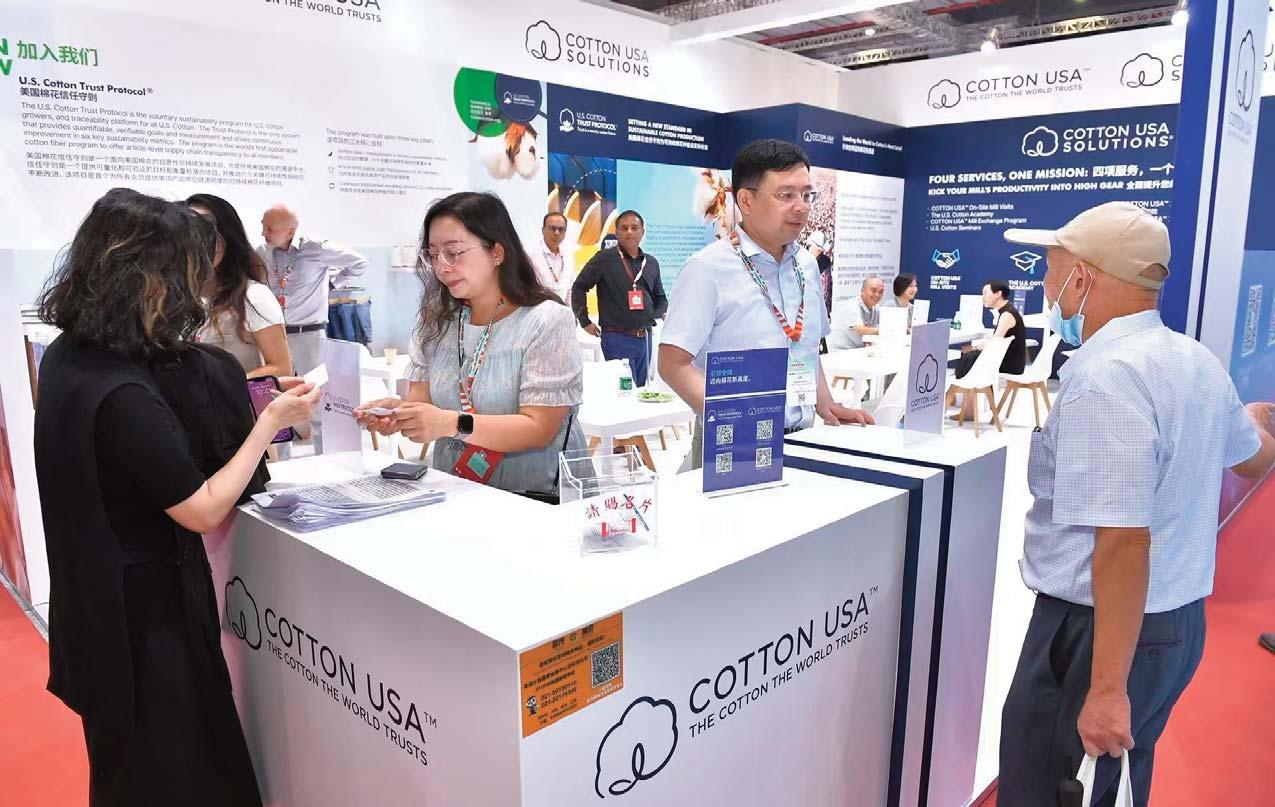
Cotton Council International (CCI) put the spotlight on U.S. cotton at the world largest textile and apparel trade show, Intertextile Shanghai Apparel Fabrics’ Autumn Edition, held in September 2025.
Amid a global audience of industry players seeking inspiration and innovation for the constantly evolving textile market, CCI highlighted the high-quality, performance and sustainability of U.S. cotton. Through engaging displays and one-on-one connections at the COTTON USA™ booth, CCI showcased COTTON USA SOLUTIONS® and the U.S. Cotton Trust Protocol®
COTTON USA SOLUTIONS, through its five business-building programs, shows spinning mills how using U.S. cotton can improve their productivity and efficiency.
The U.S. Cotton Trust Protocol, the field-level sustainability program and traceability platform for U.S. cotton, was
another key focus of the booth.
According to its 2023/24 annual report, the Trust Protocol has enrolled more than 2,500 supply chain members across 46 countries, including more than 45 global brands and retailers.
“Becoming a vital link in a transparent and responsible cotton supply chain, over 1,200 Chinese mills and manufacturers have joined the Trust Protocol,” said CCI China Director Allisa Lau. “Trust Protocol membership offers a significant competitive advantage, allowing mills to be recognized as preferred suppliers for brands seeking sustainably sourced materials.
The U.S. cotton industry’s longstanding collaboration with China’s cotton textile industry reflects our shared commitment to a more sustainable and resilient cotton textile supply chain.”
Visitors to the COTTON USA™ booth could peruse high-quality U.S. cotton
product samples from 11 Trust Protocol mills: Texhong, Bros, Yulun, Qunda, Cone Denim, Winnitex, Allfine Textile & Garment (Cambodia), Camkaxin (Cambodia) Garment, XDD Vietnam, SRS Vietnam and Advance Denim. About 90 Trust Protocol mill members attended Intertextile Shanghai Apparel Fabrics and Intertextile Shanghai Yarn Expo, held concurrently at the same venue.
“As the world’s largest sourcing hub for apparel textiles, Intertextile provided a pivotal platform for CCI to engage with Chinese cotton textile industry leaders, reinforce our partnerships and demonstrate the unparalleled value of U.S. cotton in driving both sustainability and operational excellence across the global supply chain,” said Razvan Oancea, CCI’s senior director, Asia.
Successful development and production at headquarters
At the end of July 2025, the Albstadt based braiding machine manufacturer Mayer & Cie. delivered its first MR-15 braiding machine with 48 carriers. An MR-11 system, also equipped with 48 coil carriers, left the plant before Christmas 2024 and has since reached the customer. The business unit has been part of the headquarters in Albstadt since 2019. Ongoing development has enabled Mayer & Cie. braiding to solidify its market position while evolving from a “little brother” into a key pillar of the company.
"We are pleased that we have now also completed an MR15 with 48 carriers," says Patrick Moser, head of the business unit about the braiding line with two decks. "This shows that we have fully achieved our goal of strengthening in-house development in the field of braiding machines."
Mayer & Cie. Braiding – the "company within a company" with a clear course
The Mayer & Cie. Braiding division has been based in Albstadt since 2019. "We are a company within the company, an independent division within a larger construct," explains division manager Patrick Moser. In production, Mayer & Cie. works with the same process landscape, for circular knitting machines as well as for braiding machines. "The products have nothing in common with each other, but the process in the house is still the same. That's highly efficient."
Despite the structural similarities, the markets differ significantly: While Mayer & Cie. sells circular knitting machines in around 80 countries through local representatives, the braiding sector usually operates directly. The braiding division only works with local representative offices in selected markets.
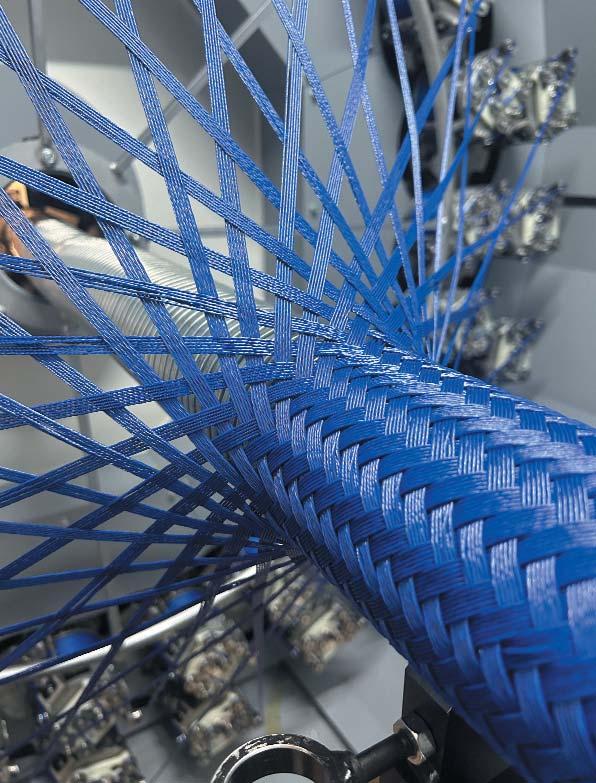
For example, if there is a certain market volume or cultural or linguistic aspects make direct sales difficult. In exceptional cases, such as in India, both divisions share a representation.

The largest market for braiding machines is China, where more than 50 percent of the hydraulic hoses manufactured worldwide are produced. The USA and Italy are also large markets. "In itself, our business is rather projectdriven," explains Moser. "Where such a project is realized geographically is of secondary importance."
Since moving from the USA to Albstadt, Mayer & Cie. has been consistently pushing ahead with the further development of its braiding technology. Even during the transfer, processes and components were re-evaluated, documented and optimized. "Every step and every part was put on the table," recalls Moser, who set up a new production line together with his team in Albstadt.
One of the central innovations: the servo drive, which can be used to control each deck individually. The soundproof booth was also redesigned, among other things, because new supply chains had to be established. At ITMA 2023, the company unveiled another innovation: the SpeedBooster – a solution designed to significantly enhance machine speed and overall productivity
For Patrick Moser, innovation is a central component of the corporate culture: "I really appreciate the short distances and quick decisions at Mayer & Cie.," says the experienced technician, who has been responsible for the business unit since 2018. The Albstadt-
based company also relies on modern processes in production: While induction hardening is used in the circular knitting area, dynamic simulation is used in the braiding area – a decisive basis for the successful implementation of the 48carrier machines.
Larger hose diameters, longer running times
Braiding machines with 48 carriers are the latest of the braiding machine developments. This allows users to expand their range of hose inner diameters, which now range from 50 millimeters (2 inches) to 150 millimeters (6 inches).
The volume of spools with which the braiding machine is equipped remains the same, even if their absolute number increases to 48. For users, the combination means that they can process more material before a coil change is due.
The positive development of the business unit makes the division manager optimistic: "We are seeing an increasing number of inquiries for interlinked systems and in-line processes in which further units are to be integrated into the braiding line," says Moser. In addition, an expansion of the portfolio to include other machine types is conceivable.
The Textile Institute has announced the full programme for the 93rd Textile Institute World Conference (TIWC 2025), which will take place from 7-10 October at the Porto Palácio Hotel and Spa in Porto, Portugal. More than 100 presentations will be delivered in parallel sessions, highlighting research collaborations from across the globe.
A central theme of the conference will be circularity, with multiple studies exploring advanced fibre-to-fibre recycling. Researchers from Manchester will present findings showing that almost half of end-of-life garments currently sent to waste could be redirected into recycling streams. From Chemnitz, new knitting technology will be unveiled that enables higher proportions of recycled content in cotton fabrics while retaining softness and durability. Case studies from Bangladesh and Pakistan will showcase how closed-loop systems are already being implemented in supply chains for major global brands.
Digitalisation will also be in the spotlight, with work presented on blockchain, product passports and RFID systems for tracking garments throughout their lifecycle. Advances in digital textile printing and open-source knitting software will further demonstrate how designers can localise production and strengthen sustainability.
Equally important will be the human dimension of sustainable practices. Presentations from Sri Lanka will reveal how apparel manufacturers are managing

risks to workers from climate change, while the Sustainable Fibre Alliance will outline efforts to engage Mongolian cashmere producers in rangeland protection. UK educators will share new teaching methods to equip future designers with the tools to embrace circular business models and ethical consumerism.
“These examples will remind delegates that technology and recycling alone cannot deliver sustainability without parallel shifts in culture, education and policy,” said Textile Institute CEO Stephanie Dick. “What will emerge from this conference is an unmistakable sense of convergence and solid progress.”
The Textile Institute is the professional body for people and organisations working in the textile, clothing and
footwear associated industries worldwide. For more than 110 years, the Institute has been bringing together professionals from all over the world for the exchange of ideas, and a social community promoting friendship among members. It is an international organisation governed by a Council representing members globally.
The Textile Institute is run democratically by and for its members all over the world by the Trustees of the Institute, and representatives from Sections, Special Interest Groups and internal committees.
As a registered Charity with a Royal Charter the role of the Institute is to advance the general interests of the textile industry worldwide, more particularly in relation to the acquisition and application of knowledge for the benefit of mankind.

PT Embee Plumbon Tekstil in Indonesia is one of the most modern spinning mills in Southeast Asia. Building on the success of their first Rieter spinning mill in 2018, Embee again chose a complete Rieter compact-spinning system when they decided to build their second mill. The entire spinning operation is digitally supported by the Rieter Digital Spinning Suite ESSENTIAL.
Embee continuously invests in cutting-edge spinning technology to strengthen its competitive position and ensure long-term success. After the outstanding performance of its first Rieter spinning mill, inaugurated in 2018, the company decided to build a second Rieter compact-spinning mill, again opting for a complete Rieter system. Each mill is equipped with 40,000 spindles. Embee has also upgraded its air-jet capabilities by replacing the first-generation J 10 machines with the latest air-jet spinning machine J 70, which offers significantly higher production output and superior yarn quality.
From fiber preparation to winding, Embee puts its entire trust in Rieter machines. The second compact-spinning mill is equipped with the card C 80, the comber E 90, the compact-spinning machine K 47, and the automatic winding machine Autoconer X6. These machines support maximum productivity, energy efficiency, and process reliability. By relying on a fully integrated system, Embee benefits from optimal coordination between process steps, reduced downtime and lower operating costs.
Digital optimization for consistent performance The entire spinning operation is monitored by the Rieter Digital Spinning Suite ESSENTIAL. This platform allows real-time monitoring and data analysis across all key production areas. Embee is able to detect deviations early, conduct preventive maintenance, and maintain a high and stable level of quality. The transparency and control offered by ESSENTIAL enable the company to fine-tune its processes continuously and respond quickly to market demands.

The companies have cultivated a close partnership over the years. Rieter had several opportunities to collaborate with Embee as a development partner. Professional feedback and openness to innovation have enabled Rieter to further refine and evolve its technologies. These joint efforts have led to practical improvements and customer-centric solutions – creating value for both parties. The partnership with Embee stands as an example of how trust, collaboration, and shared goals can drive progress in the textile industry.


by Nadeem Mazhar, Managing Editor, Pakistan Textile Journal.
Pakistan and China enjoy friendly ties, which have not only sustained changes of governments and the ups and downs in the regional and global situation but have been expanding and growing even stronger. It is in the interest of both countries to keep an eye on the new and emerging regional and global scenarios and come up with appropriate strategies to meet the challenges.
The bilateral relationship between the two neighbouring countries is characterised by feelings of mutual trust, respect and goodwill towards each other. There is a regular exchange of visits at the highest level between the two countries. The strategic cooperation between Pakistan and China has significantly grown over the past several decades.
China is Pakistan’s largest trading partner and a major investor, especially in the infrastructure and energy sector. During 2023-24, bilateral trade between
Source: State Bank of Pakistan - Annual Reports.
the two countries is US$ 16 billion. With the support of the China Pakistan Economic Corridor (CPEC), the relationship has been elevated to a higher level.
China and Pakistan are situated in an area that has great geographical importance and hosts almost half of the world’s population. Along with human resources, the area is also rich in natural
material resources. This speaks volumes about the importance of stability and of amicable relations between the countries in the region. The growth in the economic ties started with the signing of the free trade agreement between the two countries.
China-Pakistan economic corridor project (CPEC) is another milestone in the development of their bilateral relations.
The leadership of the two countries attached top priority to its early implementation.
Besides the trade, there was also an unprecedented increase in China’s investment in Pakistan. According to the data by the Chinese Embassy in Pakistan, a total of 46 CPEC projects are under construction or have been completed, and the corridor has brought US$ 25.4 billion in foreign direct investment to Pakistan and created 75,000 jobs for the locals, serving as a focal point for China and Pakistan to drive practical cooperation.
There is a significant increase in several Chinese companies working in Pakistan. Currently, approximately 10,000 Chinese workers are engaged in various projects, undertaken in Pakistan.
It is important to note that both countries are giving much importance to their mutual relations in their foreign policy.
Pakistan supported the Chinese point of view on one-China policy, Tibet and Taiwan issues. In addition, China always gives defence and economic assistance to Pakistan.
In Pakistan, there is a huge Chinese investment that is likely to contributein the development of infrastructure, roads, highways, ports, and energy and communications sectors.
The CPEC energy projects have added thousands of megawattsof installed capacity to the grid of the country and the electricity shortage which was there for the last 20-25 years is no more.
Pakistan welcomed the Chinese investment for social and economic development. Chinese investment in Pakistan is gradually increasing which is very important for economic development in the long run.
Since the establishment of diplomatic ties between the two countries in 1951, China and Pakistan have developed an all-season friendship that is based on equality and overall co-operation. In past years, the two countries have carried out multi-dimensional co-operation in various fields. Despite the unstable international situation, the China-Pakistan friendship has remained strong and vibrant. Recent years have witnessed frequent exchange of visits between the leaderships of the two countries to further promote cooperation.
China and Pakistan have witnessed steady growth in mutual investments in
recent years. A large number of Chinese companies are presently working in Pakistan in different sectors. Chinese goods are very much in demand in Pakistani markets.
Both countries have continued with their planning to undertake mega economic projects like the ChinaPakistan Economic Corridor (CPEC) connecting the Pakistani port of Gwadar with Kashgar (Xinjiang region) in China. Other projects include the construction of dams and Chinese investment in Pakistani textile, energy, banking, commerce and industry sectors and numerous other development projects.
Source : Trade Development Authority of Pakistan
The government of Pakistan plans to develop nine special economic zones across the country under the CPEC to promote its industrialization. Pakistan also pins high hopes on the CPEC and Gwadar port, in particular, to transform itself into a regional trade hub.
Due to various numerous agreements, Pakistan’s volume of bilateral trade expanded and reached the US $16 billion in 2023-24. The trade balance has been skewed in China’s favour ever since both countries entered into various trade agreements. Comparing the trade between the two, Pakistan’s exports to China increased from the US $ 2 billion in 2022-23 to US $ 2.7 billion in 2023-24. In comparison, China’s exports to Pakistan also increased from US $11.6 billion in 2022-23 to the US $ 16.2 billion in 2023-24. Pakistan-China trade is given in Table 1.
China is amongst the top importers of Pakistani cotton yarn and cotton fabrics.
It may also be noted that the trade is not restricted to cotton only, as China is also ranked as one of the largest buyers of metals and metalloids. Other major Pakistani exports to China include cotton yarn, rice, fish frozen, RMG,Cotton fabrics, surgical instruments, leather, etc. Exports from Pakistan to China are given in Table 2.
On the other hand, Pakistan’s imports from China have been seconded by none. Pakistan imports the largest percentage of goods from China, more than 29% of the entire imports come from China. The imports mainly include: textile machinery, electrical equipment, high-tech machinery, iron & steel, organic chemicals, manmade filaments etc. More than half of Pakistan’s electronic and machinery imports come from China.






In collaboration with ITMA Services, Pakistan Textile Journal successfully organised two roadshows in Lahore and Karachi in anticipation of ITMA ASIA + CITME 2025, which will be held in Singapore from October 28–31, 2025. The roadshows attracted over 300 industry professionals, manufacturers, and stakeholders, reinforcing Pakistan’s engagement with one of the world’s leading textile technology exhibitions.
Pakistan Textile Journal, the official promotional partner of ITMA Exhibitions in Pakistan, organised the networking events at Pearl Continental Hotel Lahore on July 30 and Mövenpick Hotel Karachi on August 1. Both sessions provided valuable opportunities for knowledge exchange, industry dialogue, and preparing local stakeholders to take full advantage of the global platform that ITMA ASIA + CITME offers.
Mr. Nadeem Mazhar, Senior Editor and Publisher of Pakistan Textile Journal, opened the events with a warm welcome,



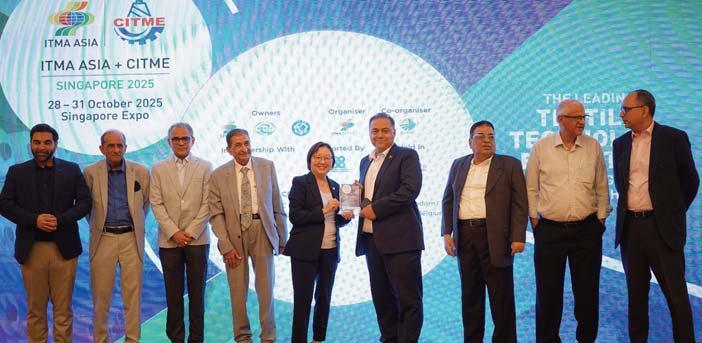





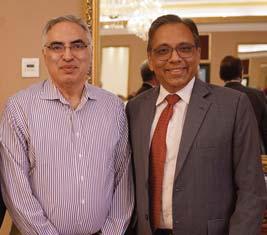











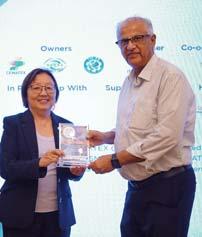

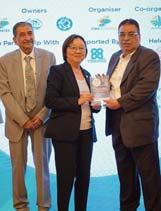




setting the tone for an engaging and insightful discussion on the upcoming exhibition.
The highlight of the sessions was the presentation by Ms. Daphne Poon, Director of Communications, ITMA Services, who has a long-standing relationship with the Pakistani textile industry since her first visit in 2001.
Ms. Poon outlined the current challenges facing the global textile sector, including supply chain disruptions, rising raw material costs, skilled labour shortages, and increasing compliance requirements. She acknowledged the concerns of Pakistan’s industry, particularly regarding the 19% US tariff, and stressed the importance of exhibitions such as ITMA
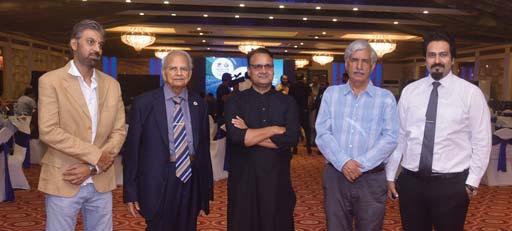


ASIA + CITME in diversifying markets and strengthening resilience.
Looking forward, she identified Industry 5.0, sustainability, and advanced textiles as key growth drivers. She urged Pakistani manufacturers to embrace automation, digitalisation, and ecofriendly production models, while also investing in skills development and R&D to compete globally.
In recorded messages, Mr. Alex Zucchi, President of CEMATEX, welcomed participants and underlined the significance of Pakistan’s role in the Asian textile dialogue.
The Karachi event brought together over 150 professionals, including leading
manufacturers and innovators. Guest of Honour, Mr. Zubair Bandukda, Chairman of the Textile Institute of Pakistan, highlighted the need for greater R&D and closer collaboration between academia and industry, particularly in the emerging field of technical textiles.
An award ceremony recognised notable contributors to Pakistan’s textile sector. Shields of honour were presented to Mr. Bandukda, along with industry leaders such as Mr. Abbas Mooraj (Nazer & Co), Mr. K.M. Khalid (Al Ameen Trading Corporation Pvt Ltd), Mr. Junaid ur Rehman (Towel Manufacturers Association of Pakistan), Mr. Aarij Iqbal (Textile Engineers of Pakistan), Mr. Anwer Aziz (APTPMA – Southern Zone), and Mr. Zameer Soomro (Trade Development







Authority of Pakistan). The awards were presented by Ms. Poon and Mr. Mazhar.
The Lahore event attracted more than 160 participants and featured Mr. Kamran Arshad, Chairman of the All Pakistan Textile Mills Association (APTMA), as Guest of Honour. In his keynote address, Mr. Arshad reflected on Pakistan’s economic challenges and emphasised how global collaboration and international exhibitions like ITMA ASIA + CITME can help strengthen the country’s textile sector.
During the ceremony, Mr. Arshad was presented with a shield of honour and a



calligraphy painting by Ms. Poon and Mr. Mazhar, recognising his leadership in advancing the industry. In turn, Mr. S.M. Qutab presented shields and calligraphy paintings to Ms. Poon and Mr. Mazhar, adding a meaningful cultural note to the proceedings.
Both roadshows concluded with a vote of thanks, followed by networking dinners. The events underscored a shared commitment within Pakistan’s textile community to seize opportunities at ITMA ASIA + CITME 2025.
The roadshows underscored the importance of international collaboration,
innovation, and research and development in driving growth and ensuring Pakistan’s competitiveness in the global textile market. As the industry prepares for the exhibition, there is a clear message: by working together, Pakistan’s textile industry can seize new opportunities and advance its position on the global stage.
With the groundwork laid at these events, Pakistan’s textile professionals are now more prepared than ever to make the most of the opportunities offered by ITMA ASIA + CITME SG 2025, ensuring that the country’s textile sector continues to grow and thrive in the global market.

Over 80 supporting organisations rally behind the region’s leading textile machinery exhibition
The region’s much-anticipated exhibition for sourcing cutting-edge technologies and sustainable solutions across the entire textile and garment value chain will open next month on 28 October.
ITMA ASIA + CITME, Singapore 2025 has already seen strong interest from textile and garment industry professionals in the region since visitor registration was launched in March. Held from 28 to 31 October 2025 at the Singapore Expo, the exhibition will gather technology providers and key stakeholders from the entire textile and garment value chain.
To date, the Singapore edition has drawn the support of over 80 textile and garment industry organisations. Among them are All Pakistan Textile Mills Association (APTMA), Asosiasi Pertekstilan Indonesia (API), Association of Iran's Textile Industries (AITI), Confederation of Indian Textile Industry (CITI), International Trade Centre (ITC), Malaysian Knitting Manufacturers Association (MKMA) and Sri Lankan Apparel Exporters Association (SLAEA). Many of the associations are organising visiting delegations.
Mr. Kamran Arshad, Chairman of APTMA, sees the

2025 edition as a good opportunity for their association members to explore the latest innovations that can help boost their business competitiveness.
He enthused, “Our members look forward to attending ITMA ASIA + CITME, Singapore 2025 as the gains they make in automation, digitalisation, and resource efficiency will translate into higher productivity, lower costs and stronger compliance with global buyers. As such, we have promoted the exhibition to our members and response has been encouraging as Singapore is more accessible to us.”

Joseph Ikpe, National President of the Garments and Footwear Factory Owners Association of Nigeria (GAFFOAN), also sees great value for his members to attend the exhibition. He said, “This exhibition is a key opportunity for us to see advanced machinery and make the right investment decisions. It is timely as the Bank of Industry Fashion Fund offers loans for equipment purchases at favourable rates.”
He added, “We are sending a delegation as we hope to keep abreast of trending technologies and find solutions that will make our industry more efficient and competitive. With Africa gaining attention as a sourcing destination, now is the time
to invest in technology that matches our ambitions.”
The much-anticipated textile machinery showcase features 19 product sectors encompassing the entire textile manufacturing value chain. Buyers will be able to source technologies and products from over 800 exhibitors from 30 countries and regions.

Early bird visitor badge registration will close on 28 September, according to the organiser, ITMA Services. Project Director, Ms Sylvia Phua advised, “Visitors planning to attend the exhibition have a few days left to secure their badges at 50% off regular rates. Those who require a visa can submit their application supported by our invitation letter to the nearest Singapore Overseas Mission or through its authorised visa agent.
“Participants will find that Singapore offers exceptional value for industry professionals beyond business: a short stay can be both productive and cost-effective. Visitors can enjoy the island’s exciting tourist hotspots and renowned food scene — from affordable hawker fare to Michelin-starred dining — making their visit a delightful cultural experience for every budget.”

ITMA ASIA + CITME, at the end of October in Singapore will see a strong participation of around 70 VDMA member companies. They will cover nearly all different machinery chapters along the textile value chain including spinning and man-made fibres, nonwovens, weaving, braiding, knitting & warp knitting, finishing & dyeing as well as technologies for textile recycling and processing of recycled material. VDMA initiated a German Pavilion with a total of 30 exhibitors in two group stands: spinning in hall 4 and finishing in hall 7.
Dr. Janpeter Horn, Chairman of the VDMA Textile Machinery Association and Managing Director of August Herzog Maschinenfabrik, explains: “The main topics of the VDMA members are efficiency, automation, digitalisation and sustainability. The companies continue to strive for innovative and sustainable solutions with low environmental impact to reduce production costs, without compromising on the high quality of European machinery that customers rightly expect. This is expressed in the common slogan ‘Experience Leading Technology’. Even in challenging economic times, customers can rely on the VDMA members as dependable partners who stand for continuity, reliability and long-term support”.
Dr. Harald Weber, Managing Director of VDMA Textile Machinery, adds: “Our members are looking forward to coming back with ITMA ASIA to Singapore after 20 years. With its central location and seamless travel options, Singapore is the

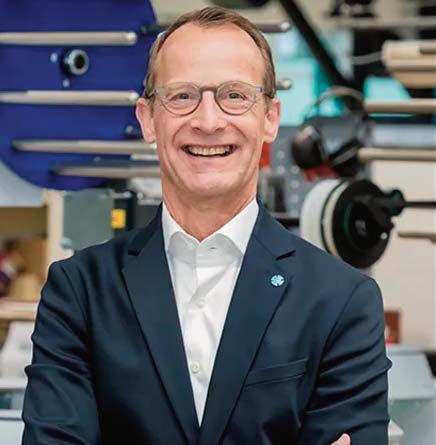
perfect location for reaching customers from one of the world's fastest-growing regions for textile and garment production.”
In general, Asia has been the number one production location for textiles and clothing in the world and will retain this


position for a long time to come. So, it is no surprise that Asia is the most important sales market for the VDMA member companies. Almost half of German exports of textile machinery and accessories are shipped to Asia. In addition, numerous German textile machinery companies are producing locally with facilities, for example, in China, India and Vietnam.
Although German exports of textile machinery and accessories to Asia declined sharply in 2024, they stabilised overall in the first half of 2025. Deliveries to China, Uzbekistan, and Pakistan even showed encouraging growth between January and June. It is hoped that this may be an indication of a more general upturn in global demand for machinery.

At the forthcoming ITMA Asia + CITME exhibition in Singapore, specialists from a 20-strong delegation of British Textile Machinery Association (BTMA) companies will be on hand to discuss some of the highly advanced industries they are now actively supporting.
The manufacture of medical sutures, for example, is a very specialised process and because these items are implanted directly into the human body, every stage of production is tightly controlled to ensure safety, sterility and reliable performance.
Absorbable sutures are usually made from polymers that degrade safely within the body, such as polyglycolic acid, polylactic acid or polydioxanone, while non-absorbable sutures use durable materials like nylon, polypropylene, polyester, silk or even stainless steel. All of these must be of medical grade and fully biocompatible.
The UK’s Fibre Extrusion Technology (FET) is a world leader in both the fibre selection and production technologies behind this industry and in Singapore will highlight a groundbreaking new parallel technology for the medical sector based on supercritical CO2. Further developments in the field of automation and control in advanced fibre production will be highlighted by BTMA members including Autofoam, James Heal, Roaches, Strayfield, Verivide and Wira Instrumentation.
From the micro to the macro, sophisticated aerospace technologies such as automated fibre placement (AFP) and automated tape laying (ATL) meanwhile involve the precise placement of carbon fibre tapes or tows on a mould surface, which are then cured to form lightweight yet strong components.


FET is a world leader in both the fibre selection and production technologies behind medical sutures.
AFP allows for complex geometries by steering individual tows, making it ideal for fuselage sections, wing skins and other curved structures. ATL, on the other hand, is more efficient for larger, flatter surfaces such as wing covers or stabilisers, where wider tapes can be laid down at high speed with minimal gaps or overlaps. Together, these technologies significantly reduce material waste, improve repeatability and deliver structural performance beyond what traditional hand lay-up methods can achieve.
The UK’s Cygnet Texkimp has developed a new technology to greatly assist this industry which will be unveiled in Singapore.
“High value industries such as aerospace, defence, renewable energy, automotive and the medical sector are areas of high growth and opportunity and an important factor underpinning the success of our companies here is the strong collaboration between industry and the many universities and institutes in the UK,” says BTMA CEO Jason Kent. “Machine builders can also be important in driving material developments as well as technologies.”
UHMWPE: ultra high molecular weight polyethylene
A good example of this is the flexible new process for manufacturing ultra high molecular weight polyethylene (UHMWPE) that will be introduced in Singapore by FET.
UHMWPE is prized in many industries due to its extraordinary properties, being for example, ten times stronger than steel by weight. It is increasingly used in medical implants, but the current systems for manufacturing it are on a huge scale, with very complex processing routes.


This restricts the opportunity for new product development – a disadvantage that is fully addressed with FET’s series lab and small scale gel spinning system, which is already industrialised.
“We have supplied many extrusion systems to the biomedical market and in exploring what else we could do for the same customers it became clear that there was a need for smaller quantities of UHMWPE fibres in bespoke sizes.” explains FET Managing Director Richard Slack. “We believe our introduction of a patented batch system for solvent extraction exploiting supercritical CO2 is a game changer.”
Cygnet Texkimp has meanwhile just introduced a next-generation, productionscale prepreg tape slitting machine at its UK Innovation Centre in Northwich.
This enables organisations to trial the slitting of continuous thermoset, thermoplastic and ceramic prepreg tapes for AFP and AFL processes in real-world conditions using their own materials or those produced on Cygnet Texkimp’s inhouse R&D prepreg machines on the machine. The technology can slit tapes at speeds of up to 60 metres per minute, subject to the input material.
“We’re pleased to be able to offer partners the opportunity to engage with us at an early stage in process development, to test out their concepts, explore machine parameters, assess output quality and validate performance with support from our expert team,” says Graeme Jones, wide web product director at Cygnet Texkimp.
Also providing back up services to the aerospace industry is Airbond, with splicing technologies which ensure resource efficiency in the processing of extremely expensive carbon and aramid fibres. Pneumatic yarn splicing is a process established in the textile industry for joining yarns and works by intermingling individual filaments closely together, to make joint which are stronger and flatter than knots.
“We are continuing to find new partners in the wind turbine, hydrogen and aerospace industries and are doing a lot of developmental work with research

institutes and universities,” says technical director Carwyn Webb. “This is leading to us expanding our portfolio and we are currently working on systems for carbon tape splicing, for example, as well as an automated system for full weaving beams.”
Further developments for the technical textiles and composites sectors will be showcased by BTMA members including Garnett Controls, Roaches International, Slack & Parr and Tatham.
“Many BTMA members are currently developing new technologies, either in-house or increasingly through joint projects, and we have much to reveal in Singapore,” says Jason Kent in conclusion. “There’s a new spirit of openness and adventurous interaction in the UK right now – especially in the fields of advanced fibres and technical textiles – which is very encouraging for the future.”
BTMA companies taking part in ITMA Asia + CITME 2025 are Airbond (stand A202, Hall 2), Autofoam (B309, Hall 7), AVA CAD/Cam (C210, Hall 6), Cygnet Texkimp (B493, Hall 8), Fibre Extrusion Technology (B306, Hall 4), James Heal (B306, Hall 3), MCL (A203, Hall 5), Roaches (A112 Hall 2), Saurer Fibrevision (C301c, Hall 3), SDC Enterprises (B107, Hall
8), Sellers (B207, Hall 7), Shelton Vision (B308, Hall 7), Slack & Parr (D305, Hall 4), Society of Dyers and Colourists (B203, Hall 3), Strayfield (B509, Hall 7), Tatham (D205, Hall 2), The Textile Institute (B105, Hall 8), Verivide (B201, Hall 3), Vickers Oils (B102, Hall 5) and Wira Instrumentation (A108, Hall 3),
Founded in 1940, the British Textile Machinery Association actively promotes British textile machinery manufacturers and their products to the world. The nonprofit organisation acts as a bridge between its members and the increasingly diverse industries within the textile manufacturing sector.

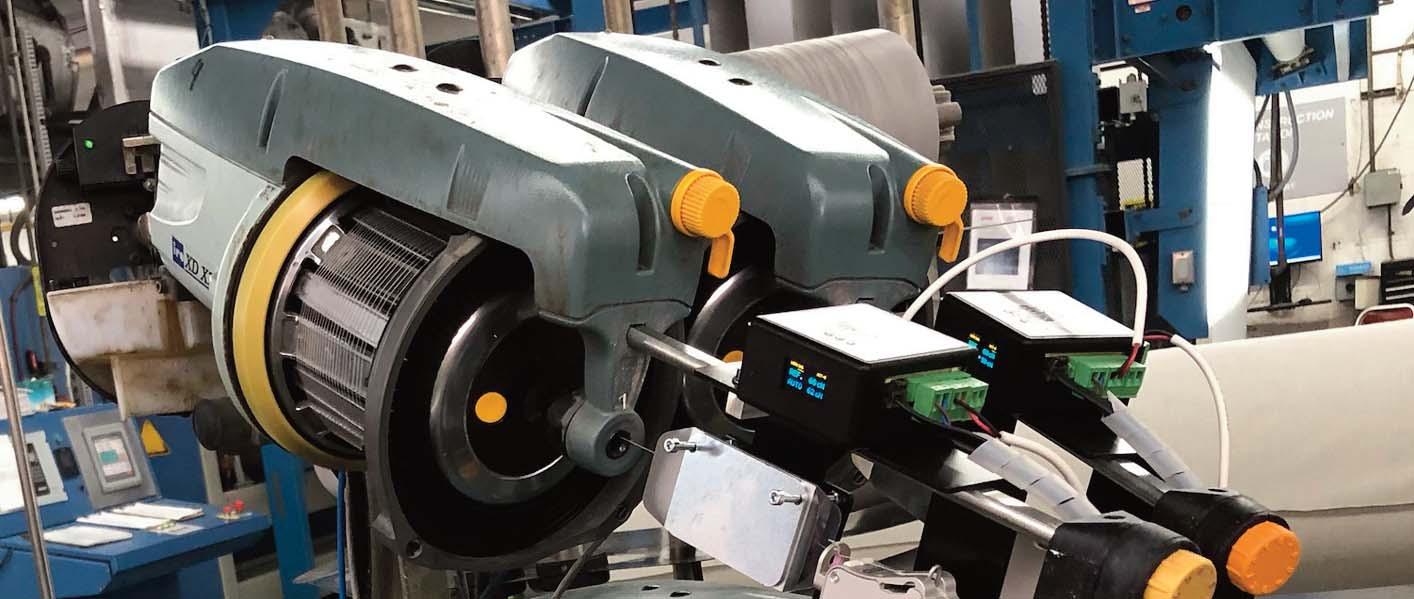
Members of TMAS, the Swedish textile machinery manufacturers association, will introduce a range of new developments at the forthcoming ITMA Asia + CITME textile machinery exhibition in Singapore from October 28-31, with the emphasis on sensor-based automation and resource savings.
“The push for automation, AI-driven production and digitalisation continues to accelerate as manufacturers seek to improve efficiency and reduce dependency on repetitive tasks for operatives,” says TMAS Secretary General Therese Premler-Andersson. “Advanced automation enables predictive maintenance and real-time quality monitoring in fully integrated production systems and our members are already exploiting these technologies to help customers reduce downtime, improve efficiency and produce more sustainably.”

Under its trademarked slogan ‘Complete Process – One Supplier’, for example, ACG Kinna Automatic (at Hall 6, stand D106 in Singapore) has pioneered the development of complete robotic lines for the production of pillows and duvets for the home furnishings sector – from the handling and opening of filling material and full line fabric feeding to sewing, digital quality control and packing.
Just a few yearsago, such lines were seen by manufacturers as something exciting to perhaps consider for the future, but suddenly they have become essential to competing and surviving in today’s fast-moving industry.
“Automation has become a must for a number of reasons,” says ACG Kinna Marketing and Sales Manager Tomas Aspenskog. “Product traceability, flexibility and local production, in addition to new trade regulations, are now driving the market and given the challenge of finding skilled operators and constantly increasing costs, manufacturers are looking for simpler systems that will save on resources and boost productivity wherever possible.
“Our modular solutions enable customers to be more flexible and faster in adapting specific parts of a production line to meet new demands, and also to grow over time. There are also many benefits for manufacturers in dealing with

only one project leader, contact person, supplier, freight handler and installation team.”
In Singapore, ACG Kinna Automatic will introduce the new Hector industrial sewing machine designed for the heavy duty circular and point stitching of filled textile components such as garden cushions, outdoor pillows and mattresses. Hector is already being employed by leading Swedish retailers including IKEA and JYSK in their manufacturing operations.
The Hector’s sewing arm is adjustable and can open up to accommodate thicker items under the needle and presser foot.

It is available in three versions with sewing arms in lengths of 60, 100 and 120 centimetres.
Another TMAS member, Eltex (Hall 2, stand C203) has made an important breakthrough on its EyETM tension monitoring system for the heat setting, tufting, warping and winding sectors, with the addition of electromagnetic brakes in combination with the latest advanced sensors. These enable tension variation to not only be detected, but automatically adjusted in real time during operation, rather than manually changed as previously.
The company’s ACT-R unit can further significantly reduce the selvedge yarn waste from the weft insertion systems of rapier weaving machines, while at the same time maintaining equal and steady tension across all pre-winders.
“Our ACT-R is a completely plug and play, stand-alone system and self synchronizes without any communication with the weaving machine,” explains Eltex Sales Engineer Michél Gamhov. “This is important, because many older weaving machines are still in operation worldwide, and the ACT-R enables instant improvements to be made without upgrading these machines in any way. We have achieved fantastic results for weavers working with recycled yarns who have been amazed at the difference in consistent quality and uninterrupted production that can be achieved.
“As everyone knows, the less waste you have the more you save in materials, labour, runtime and quality and we can help mills cut losses in many of these areas depending on the challenges they are facing. Many of our sensor-based systems are able to give older textile machines a new lifeand in Singapore we’re looking forward to talking to customers about the problems they face, because we believe there’s even more, we can do with our advanced technologies to make their existing machines more efficient.”
Svegea tubular components
The colarette machines of Svegea (Hall 6, stand D109) set the standard throughout Asia for the high speed production of tubular apparel
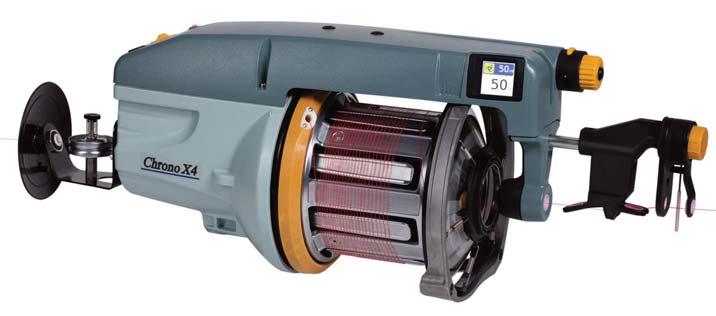
components such as cuffs, collars and neck tapes and in Singapore the company will demonstrate its EC 50 and EC 200 with E-Drive II models, in addition to linked cutting systems.
“Our collarette machines are designed for long life-cycle durability and energy efficiency, reducing waste while providing high-quality binding,” says Svegea Managing Director Håkan Steene. “Our customers in Asia are increasingly looking to automation to improve efficiency and achieve cost savings and we address these needs by developing flexible machines that can be adapted to a wide range of customer requirements and combine high performance with userfriendly automation features.”
Advanced weaving control is also the bedrock of business for Vandewiele Sweden AB (Hall 2, stand D301e), which supplies weft yarn feeding and tension control units for weaving looms to the majority of the leading weaving machine manufacturers, as well for retrofitting in working mills around the world and will present its latest X4 yarn feeders with integrated accessory displays at ITMA ASIA + CITME 2024.
X4 feeders are available in three different versions – with an integrated tension display (TED), with integrated

active tension control (ATC), or with quick release, which enables weft tension settings to be transferred from one machine to another, enabling a fast startup the next time the same article is woven. The position of the S-Flex Tensioner is constantly monitored by an internal sensor – even if adjustment is made during power off.
Vandewiele Sweden has recently further strengthened its product portfolio with IRO Gaugepart modules which are applied to tufting looms for the carpet industry, to determine the appearance of a carpet in terms of feel and structure. All parts are now available to order from the www.iroonline.com e-commerce site.
“Our size and flexibility mean that we can offer bespoke customer solutions according to specific requests –something that many larger manufacturers have difficulty matching,” says Division Manager Tobias Sternfeldt.
Finally, the automated Texcoat G4 finishing system of BW Converting (Hall 8, stand B201) has been a runaway success in the past few years and the company will announce an entirely new, but related technology shortly before the Singapore exhibition.
“TexCoat G4 spray technology was developed in Sweden from our off-set printing business and we initially focused on installing units in Europe and the USA,” explains the company’s Vice President of Global Business Development for Textiles Rick Stanford. “In the past two years, however, we have been very active in Asia, with 35 units sold – and many of these customers have been asking for technologies in related areas. We’ll be saying more very shortly.”


This year’s world highlight event for textile machinery and solutions will be ITMA ASIA + CITME 2025, and it’s back in Singapore. The show, from October 28 to 31, features exhibits from 19 sectors of the textile and garment manufacturing value chain.
30,000 visitors are expected to the Singapore Expo site. Extensive air links and visa-friendly policies make Singapore an accessible destination for visitors. Attendees will be offered 800 exhibitors from the textile machinery and technology sector, occupying 60,000 square meters of booth space.
Singapore was chosen again as an important hub for textile trade and innovation and a springboard to regional markets. The vibrant textile and clothing industry in South and Southeast Asia –and the Middle East – attracts global suppliers of textiles and garments, as well as manufacturers keen to invest in the latest technologies to develop their businesses.
Switzerland will be strongly represented at ITMA ASIA + CITME 2025, with
29 leading companies set to unveil their latest textile machinery and technology solutions in Singapore this October. Renowned names such as Rieter, Stäubli, Uster Technologies, Saurer, SSM, Jakob Müller, and Autefa Solutions will be joined by a wide range of Swiss innovators, including Benninger, Bluesign Technologies, Loepfe Brothers, Heberlein Technology, and Santex Rimar Group. Together, they will highlight Swiss expertise across the textile value chain, from spinning, weaving, and finishing to automation, digital solutions, sustainability, and chemical innovations.
This strong participation underscores Switzerland’s position as a global leader in textile machinery and solutions, with companies showcasing not only cuttingedge technology but also sustainable practices and advanced engineering. Visitors to the show can expect to see innovations that address the industry’s most pressing challenges, including efficiency, environmental impact, and smart manufacturing. Complete information about the exhibiting members from the Swiss Textile Machinery Association and their booth locations is available online at www.swisstextilemachinery.ch.
At the upcoming ITMA Asia + CITME in Singapore, the participating association members look forward to seeing their many customers again – and meeting new ones. They are also keen to leave a deep impression by presenting their latest innovations.
Swissmem is the leading association for both SMEs and major corporations in the Swiss technology industry. Swissmem enhances the competitiveness of its 1350 or so member companies both at home and abroad by providing needs-based services. These services include professional advice on employment, commercial, contract and environmental law, energy efficiency and technology transfer. Swissmem operates a number of strong networks, including 24 industry sectors. The Swiss Textile Machinery Association is the oldest division, founded in 1940. It represents the interests of the Swiss textile machinery manufacturers. Swissmem and the Swiss Textile Machinery Association are headquartered in Zurich.

100 Italian companies will be present at the ITMA ASIA + CITME Singapore 2025 trade fair, taking place from October 28 to 31. With a space of approximately 4,000 square meters, Italy is among the event's top exhibiting countries, as has been the case in previous editions. 53 Italian exhibitors will showcase their innovations within the National Sector Groups, exhibition areas organized by ACIMIT and the Italian Trade Agency.
The ITMA ASIA + CITME trade fair has always been the main showcase for textile machinery manufacturers in Asia, an area that absorbs 50% of global exports, for a value that reached 8.8 billion euros in 2024. The Asian continent is also home to the world's main markets for textile machinery, China and India, whose total imports are worth 4.3 billion euros.
The Asian market is also the primary foreign destination for Italian companies in the sector. In 2024, exports to Asia amounted to €664 million, while in the first six months of 2025, Italian sales in the region grew by 1% compared to the same period in 2024, reaching €317 million. China, India, Pakistan, and Bangladesh are the main Asian destinations for Made in Italy machinery.
ACIMIT President Marco Salvadè states: “ITMA ASIA+CITME Singapore is a further opportunity for Italian textile machinery manufacturers to showcase their technological offerings. Furthermore, choosing Singapore allows Italian exhibitors to interact with many Southeast Asian markets, which are emerging as increasingly important textile production hubs .”
“Despite geopolitical uncertainties, the significant presence of Italian exhibitors in Singapore confirms the vitality of our sector,” says Salvadè . “At ITMA ASIA+CITME Singapore, Italian manufacturers will offer a wide range of
advanced solutions covering the entire textile supply chain. Visitors will be able to experience the quality and level of Italian technology, which focuses on increasing process digitalization and attention to production sustainability. I am confident that Singapore will confirm the commitment of Italian manufacturers to combining traditional textile expertise with cutting-edge innovation.”
On his side, Giorgio Calveri, Director of ITA Singapore, states: “With 86% of its 2.1 billion euro production exported, Italy’s textile machinery industry confirms its strong international orientation, with Asia as its main market. ITMA Asia + CITME 2025 in Singapore is a strategic opportunity to strengthen Italy’s presence in this key region. With 100 exhibitors coordinated by ACIMIT and supported by ITA, Italy stands as a trusted partner for advanced, sustainable, and competitive technologies.”
ACIMIT (Association of Italian Textile Machinery Manufacturers) represents an industrial sector that comprises roughly 300 manufacturers (employing around 12,500 people), which produce machinery for a turnover worth of around 2.1 billion euro, of which 86% are exported. Creativity, sustainable technology, reliability and quality are the hallmarks that have made Italian textile machinery worldwide leaders.
ITA – Italian Trade Agency is the Governmental agency that supports the business development of our companies abroad and promotes the attraction of foreign investment in Italy. With a motivated and modern organization and a

widespread network of overseas offices, ITA provides information, assistance, consulting, promotion, and training to Italian small and medium-sized businesses. Using the most modern multi-channel promotion and communication tools, it acts to assert the excellence of Made in Italy in the world.

Archroma
Chhipasons.................................................................64
Cotton
DPS
Fong’s
Heimtextil





